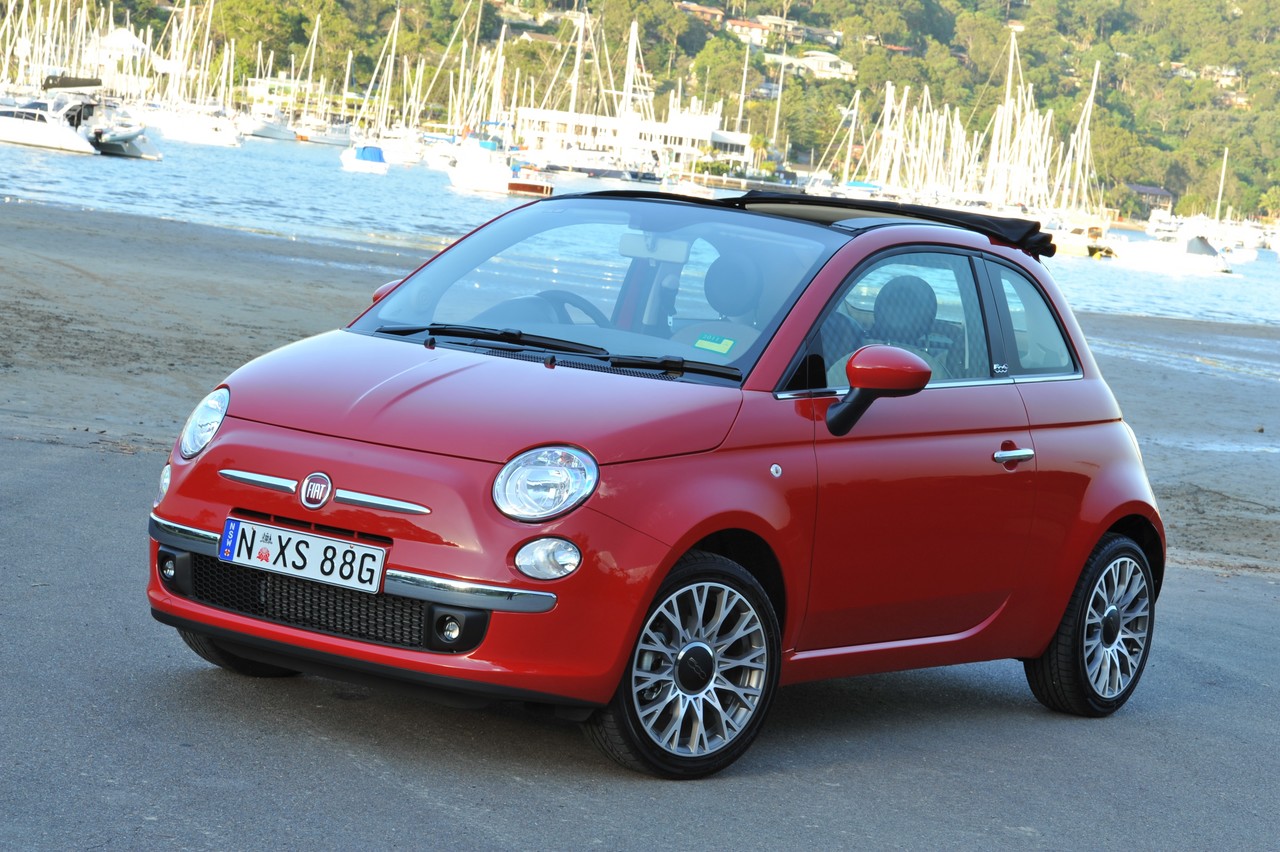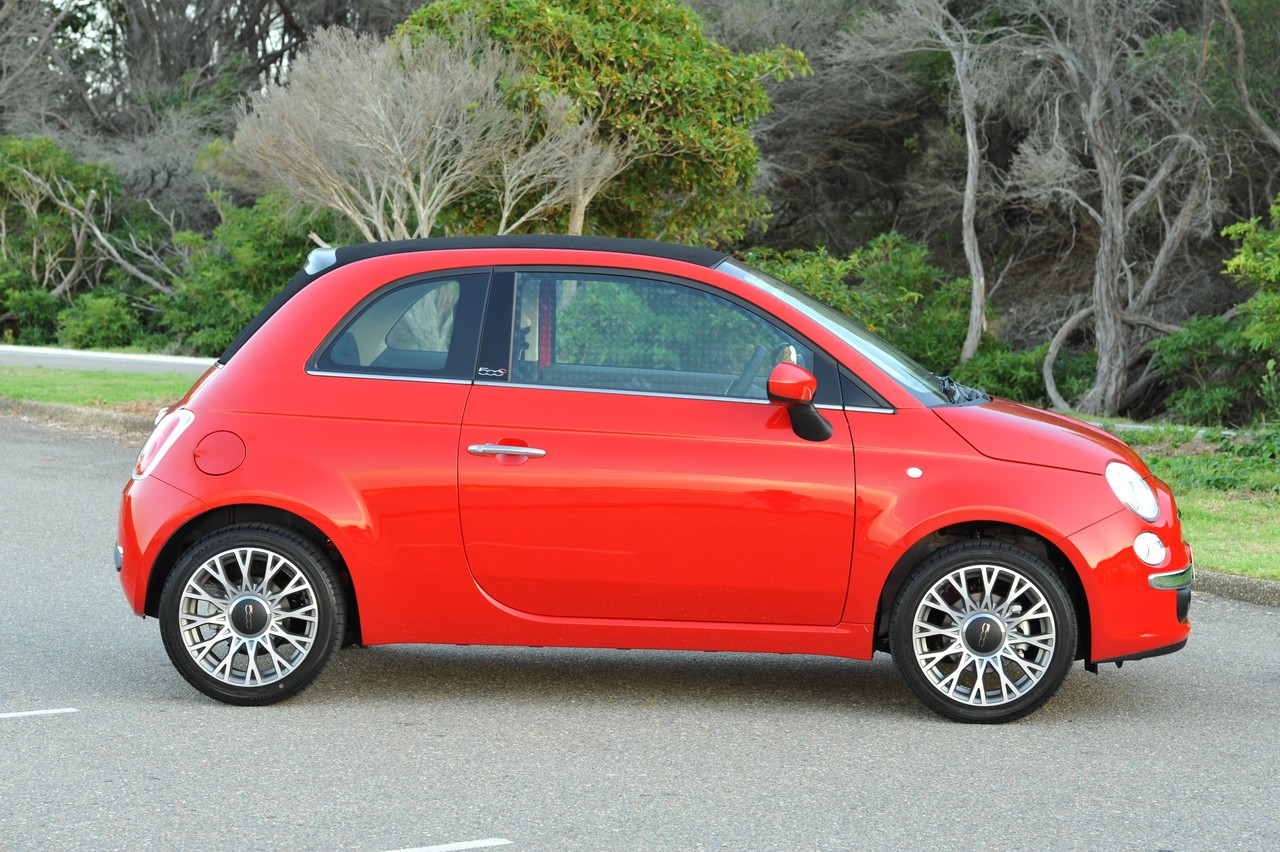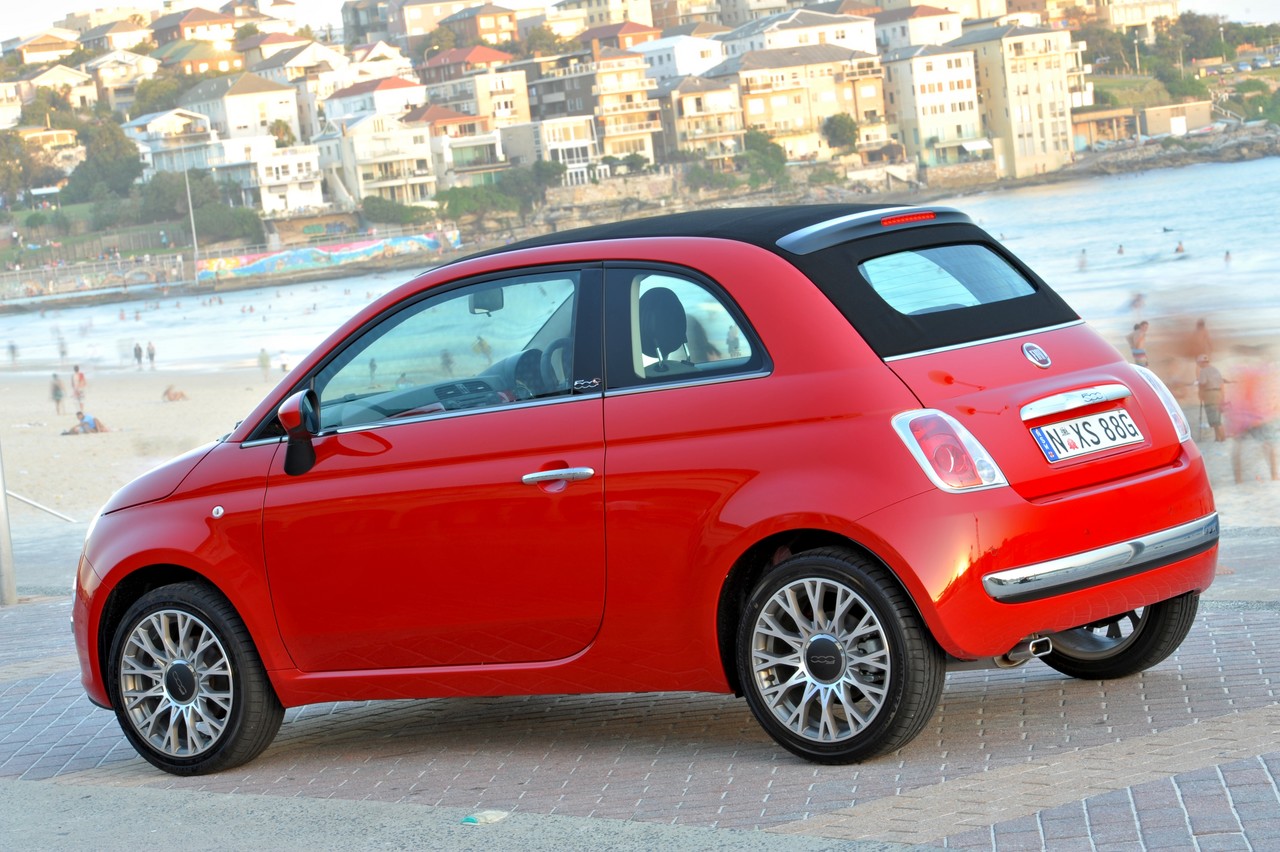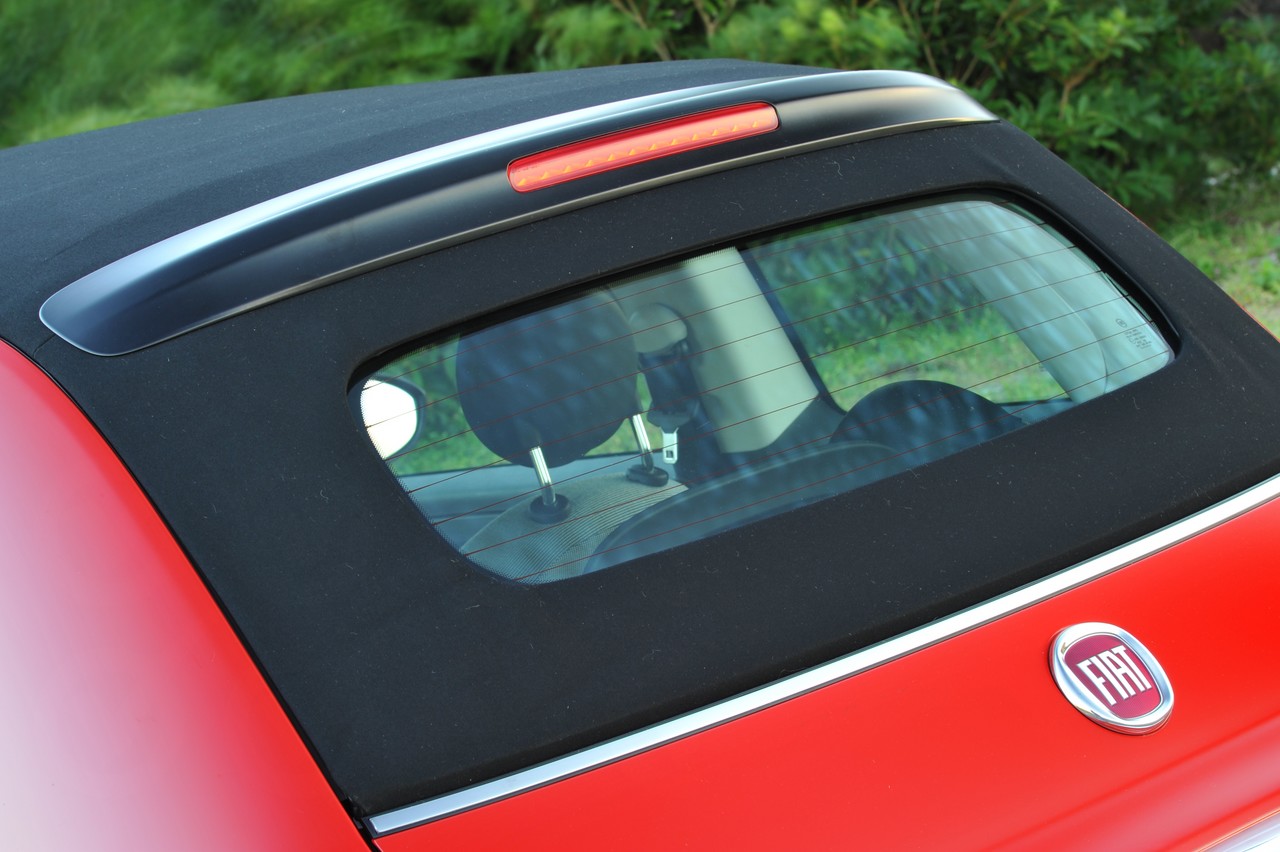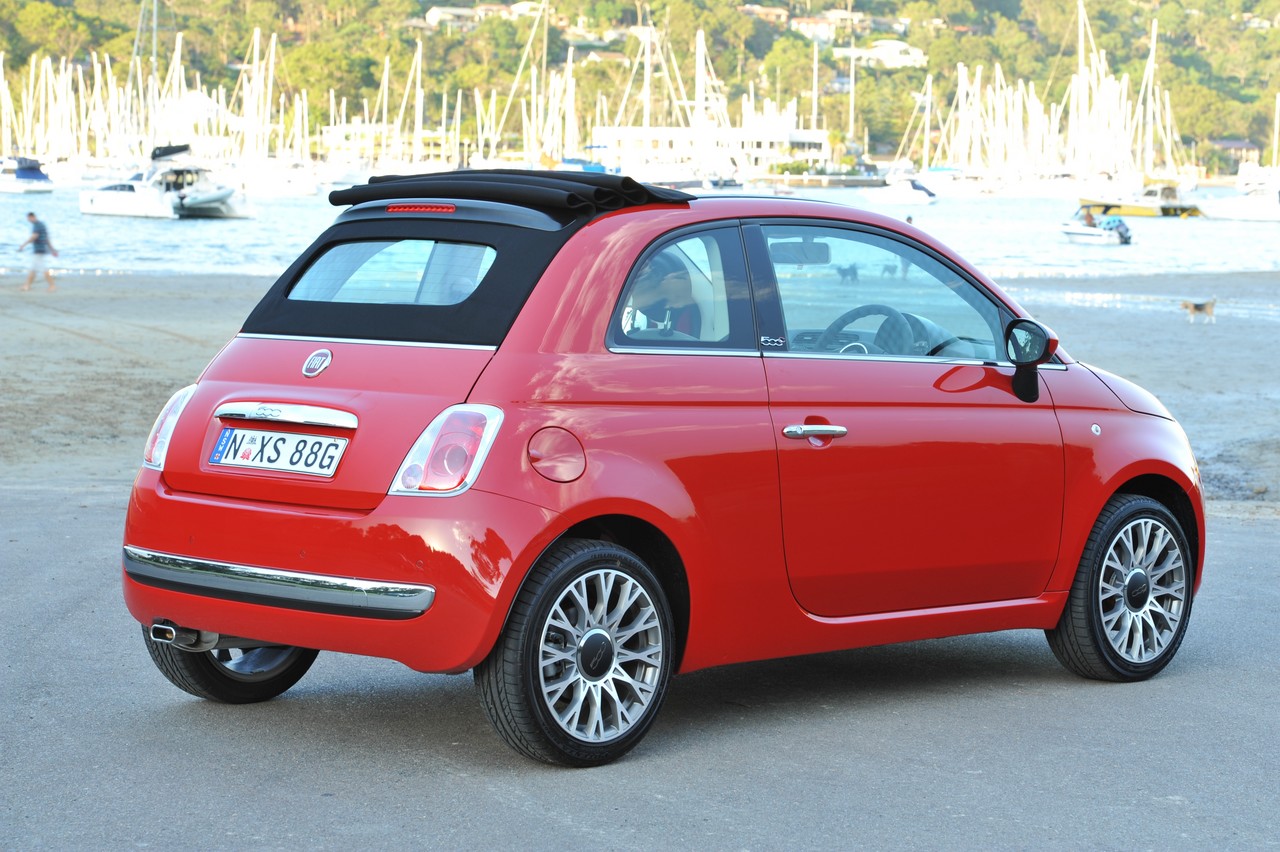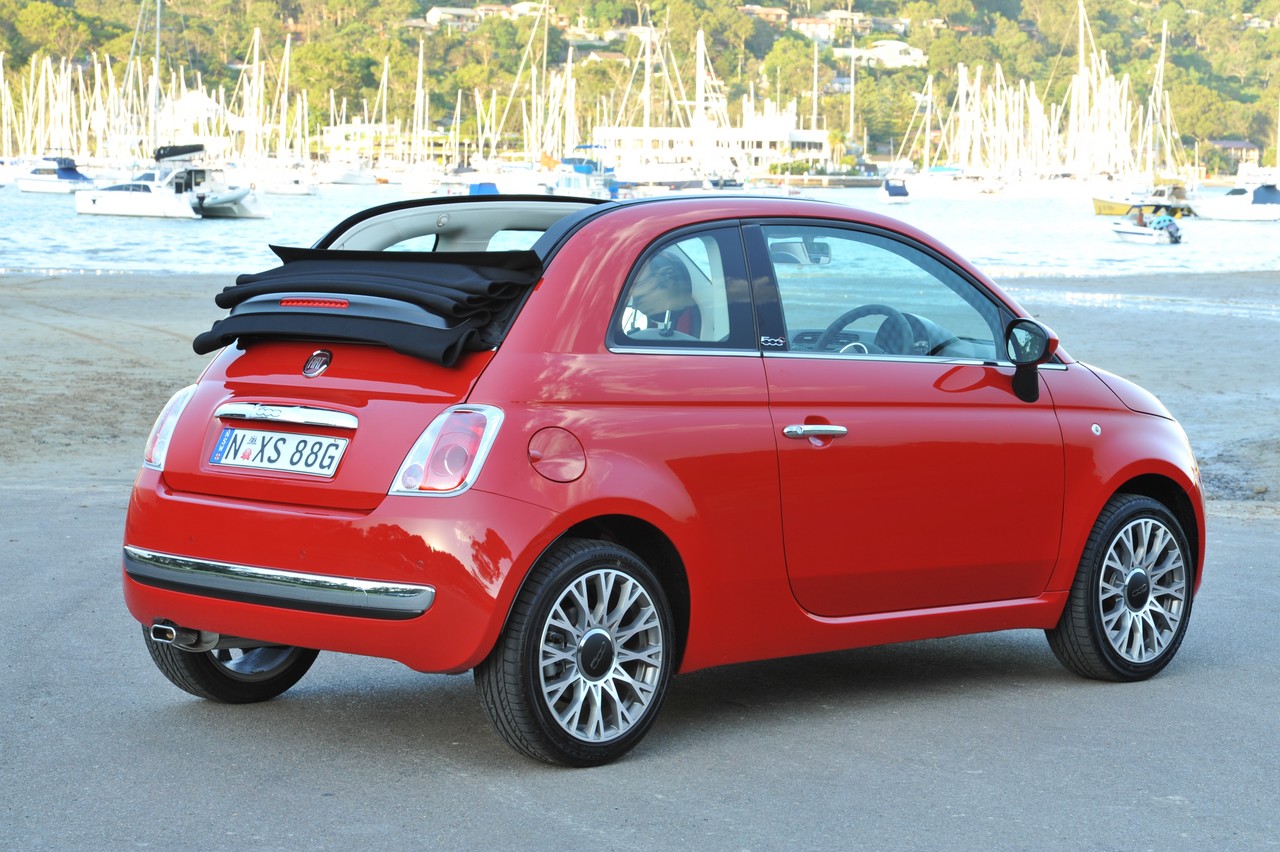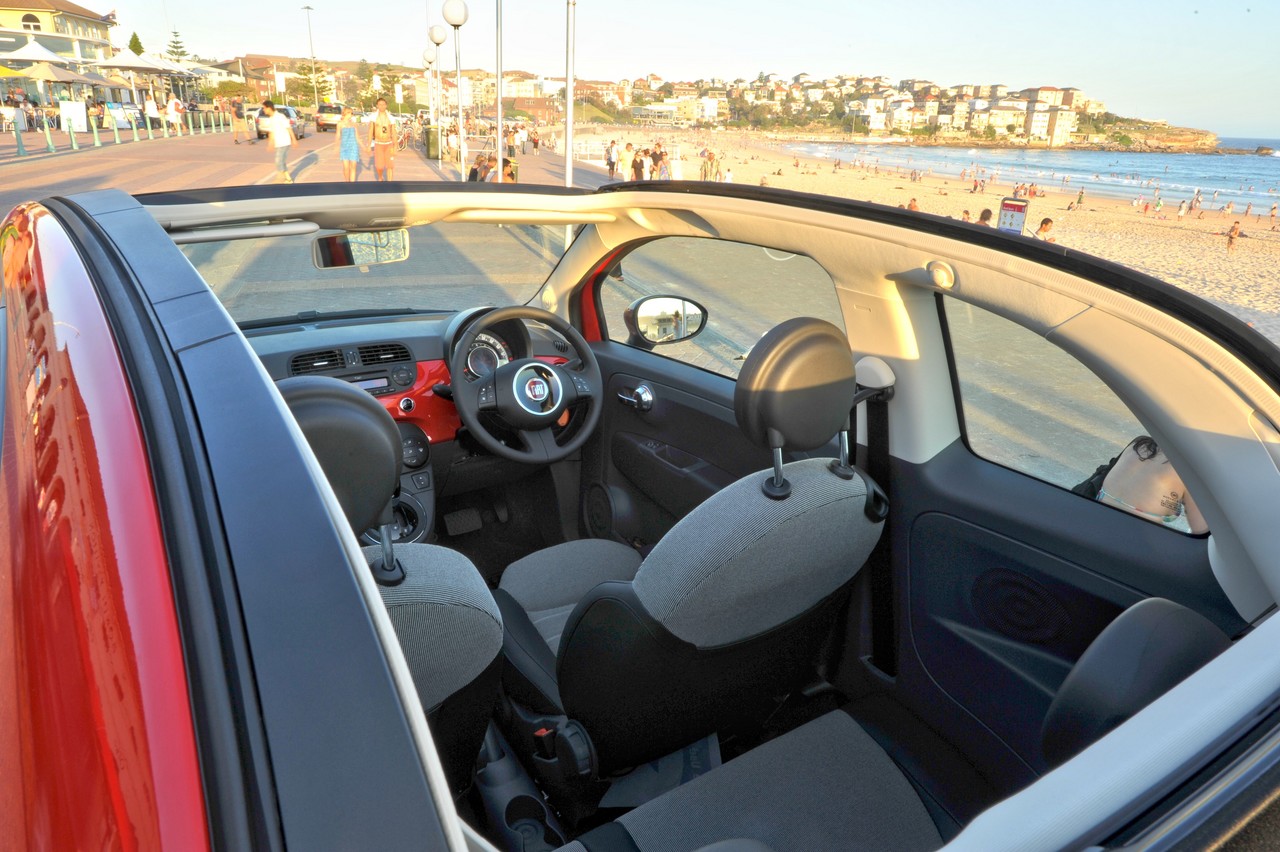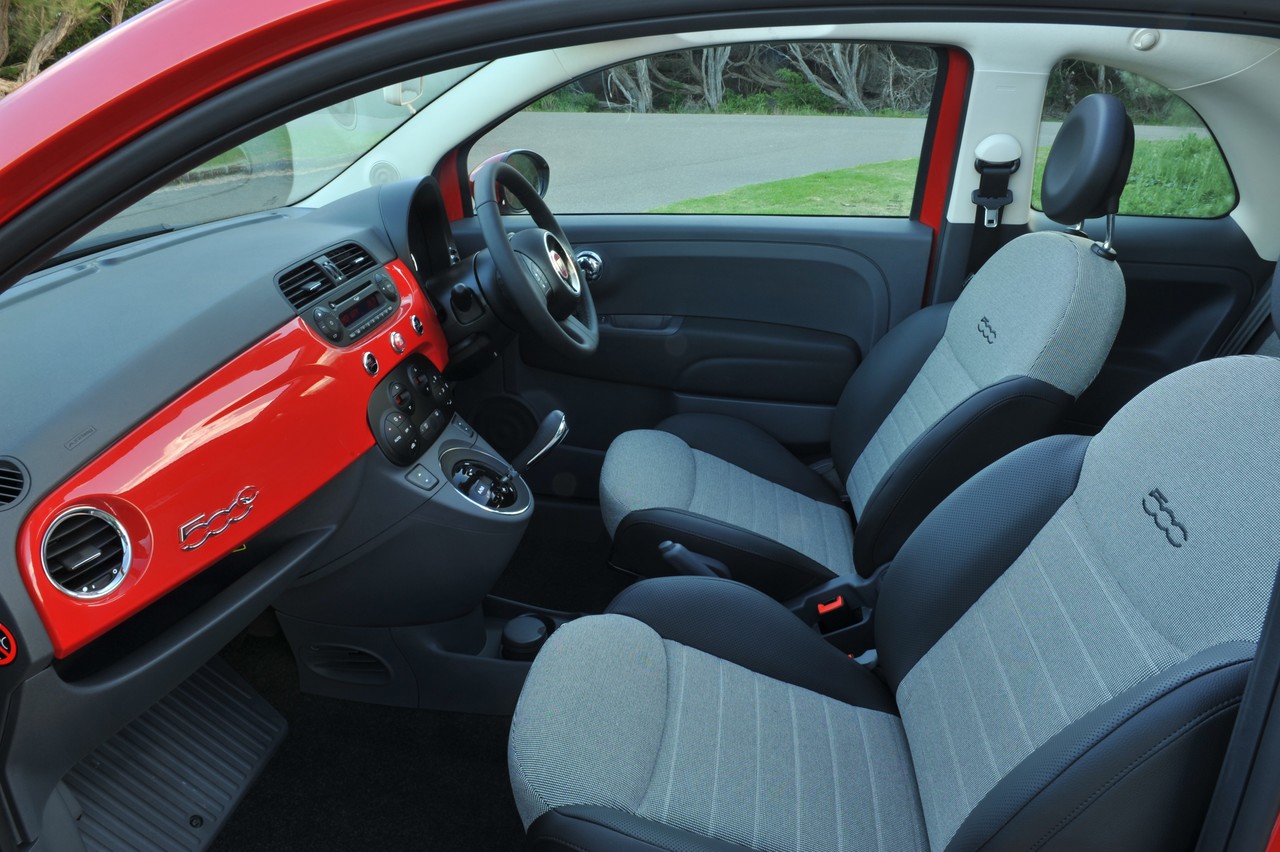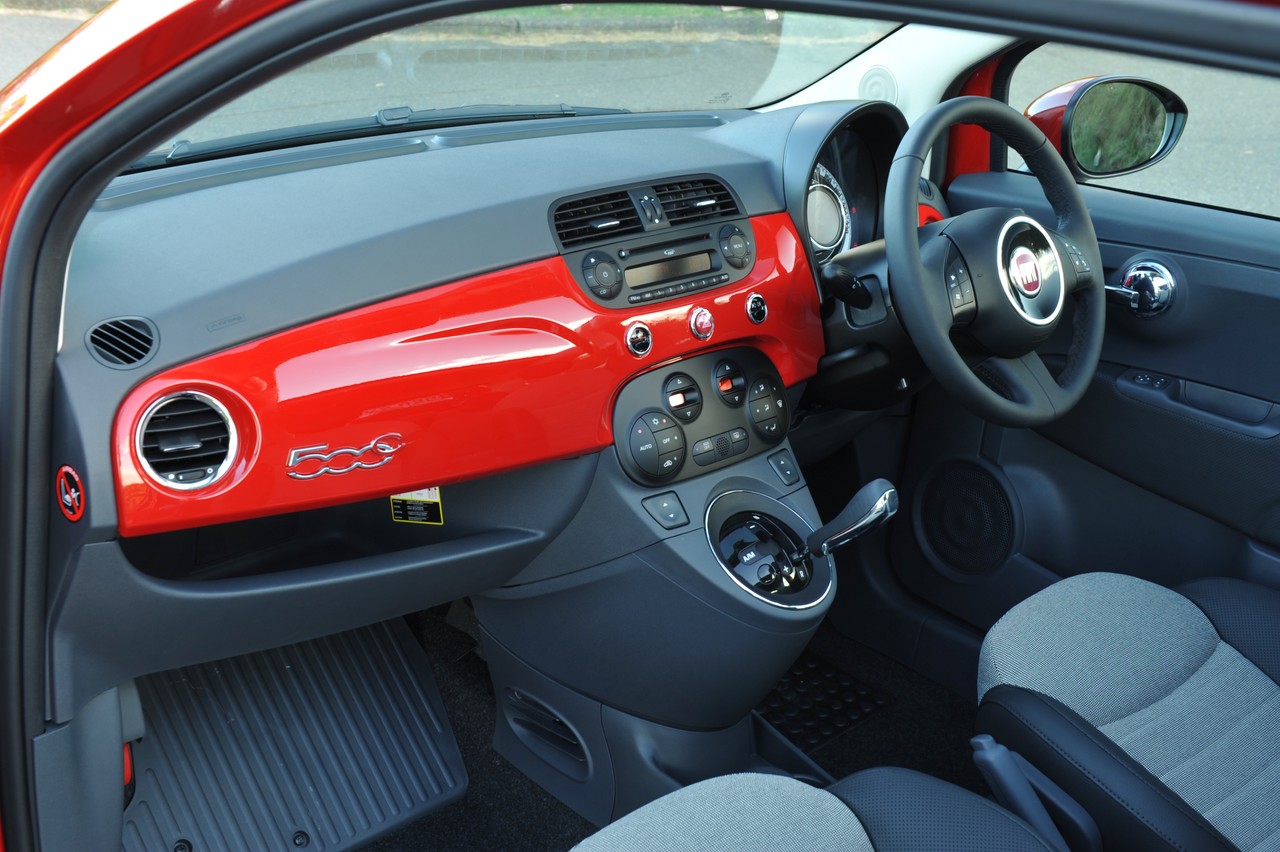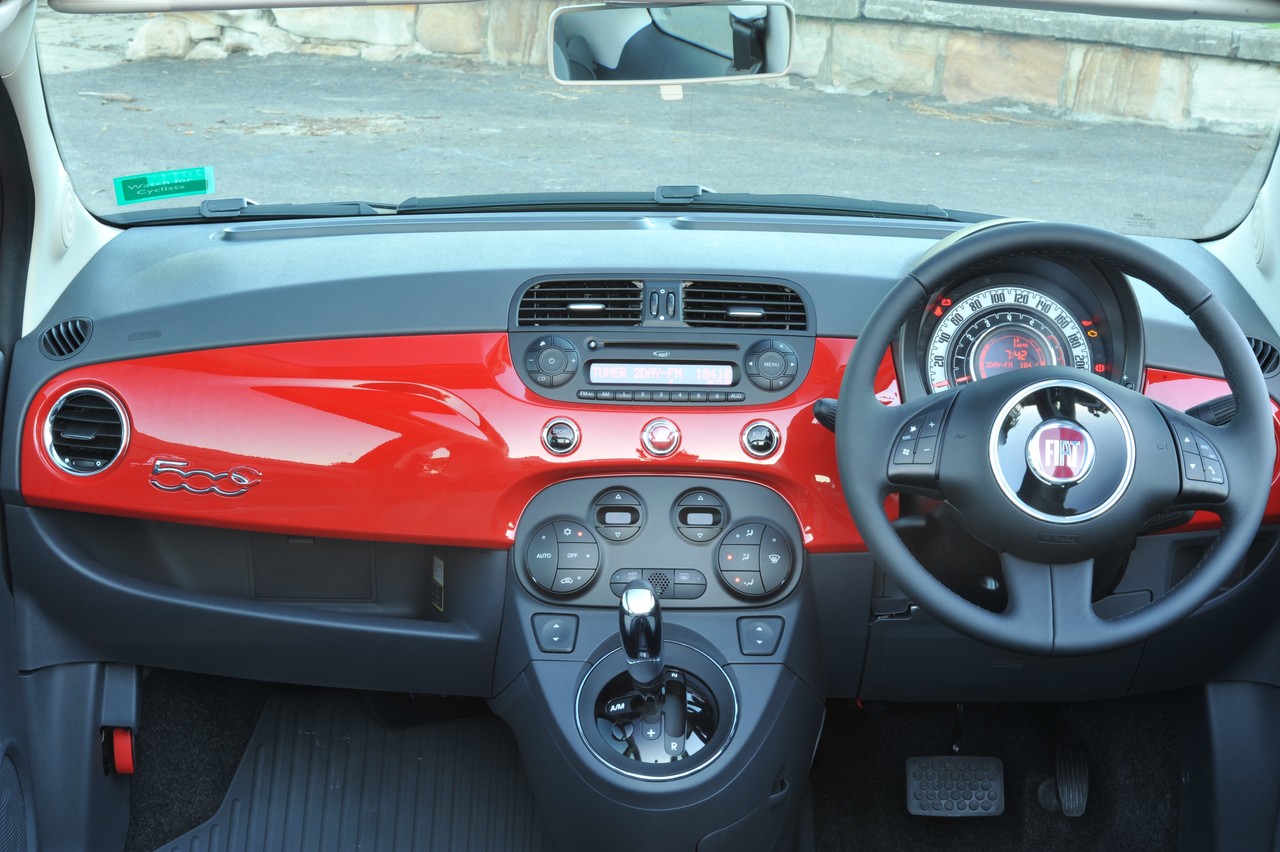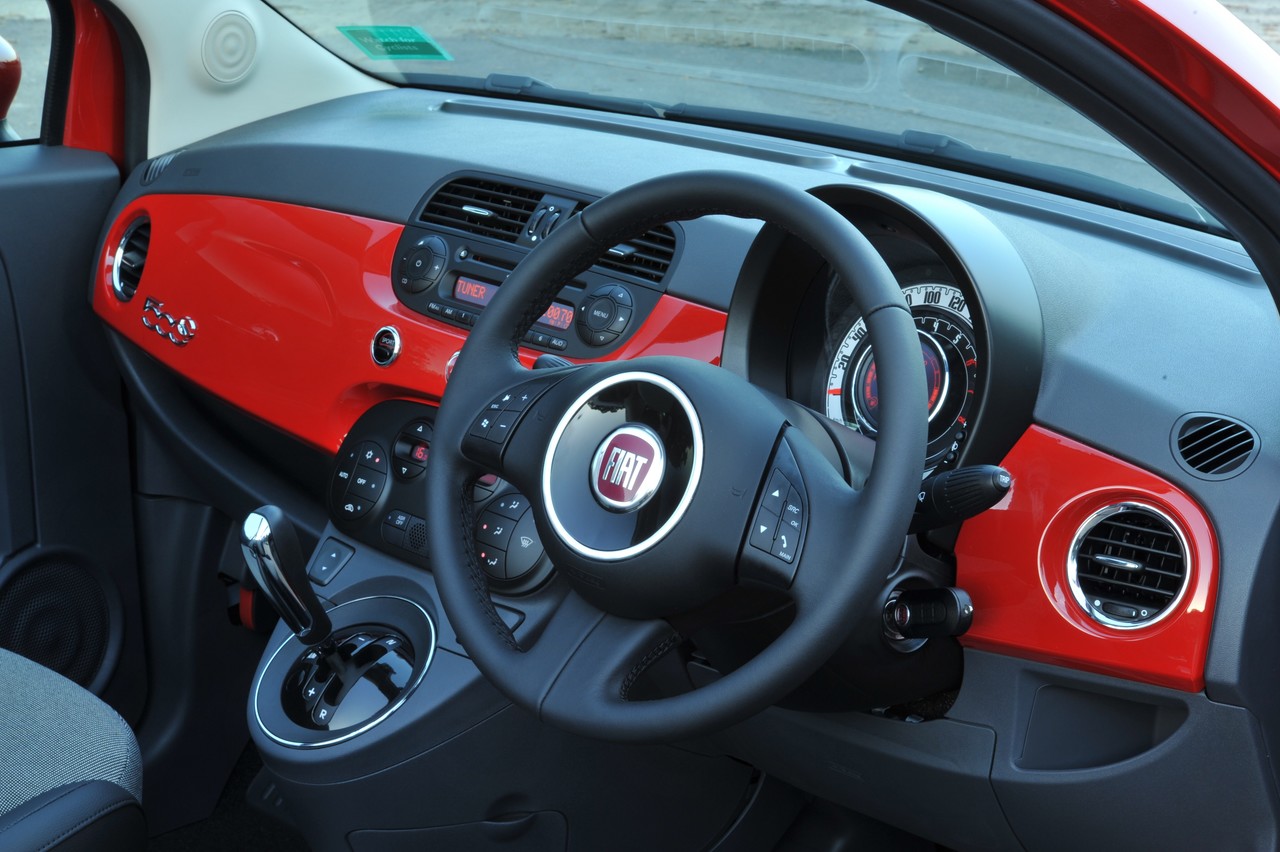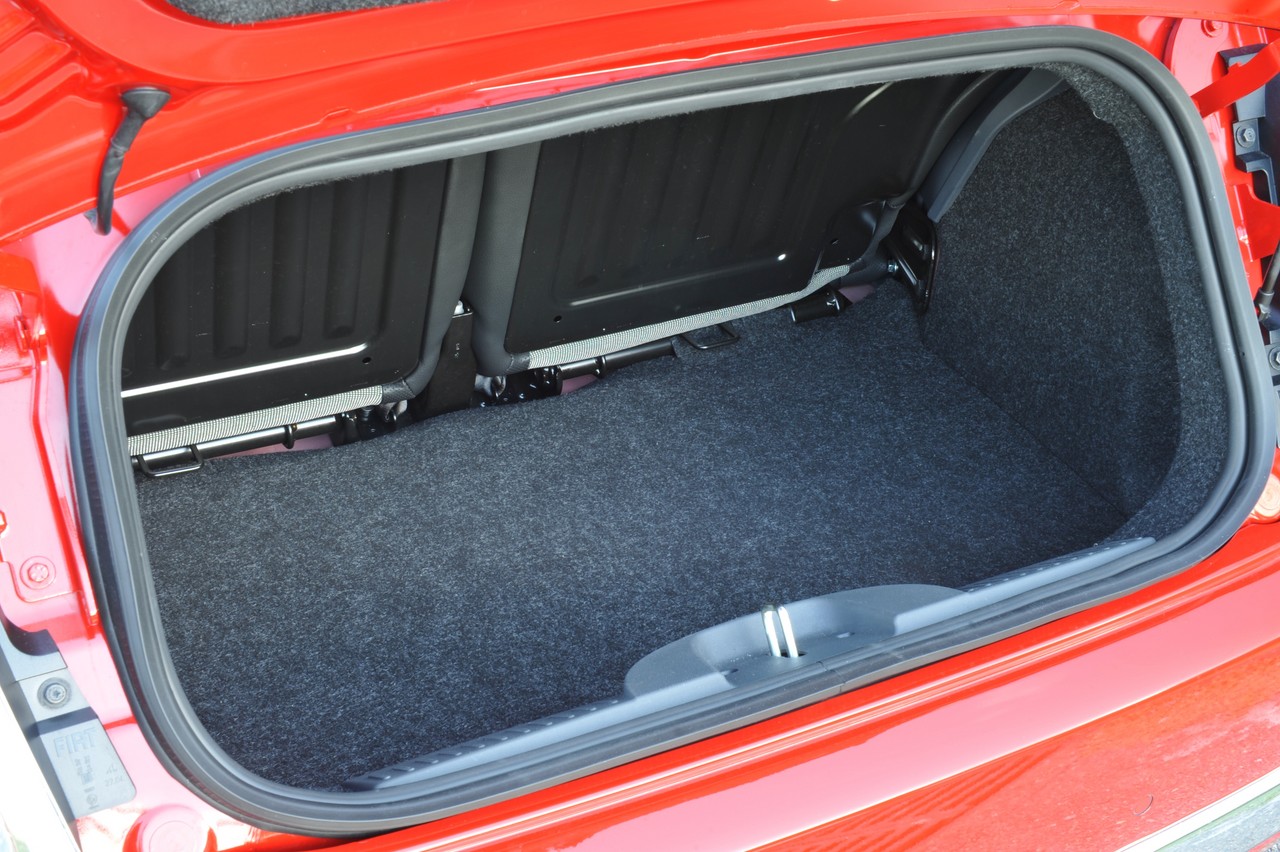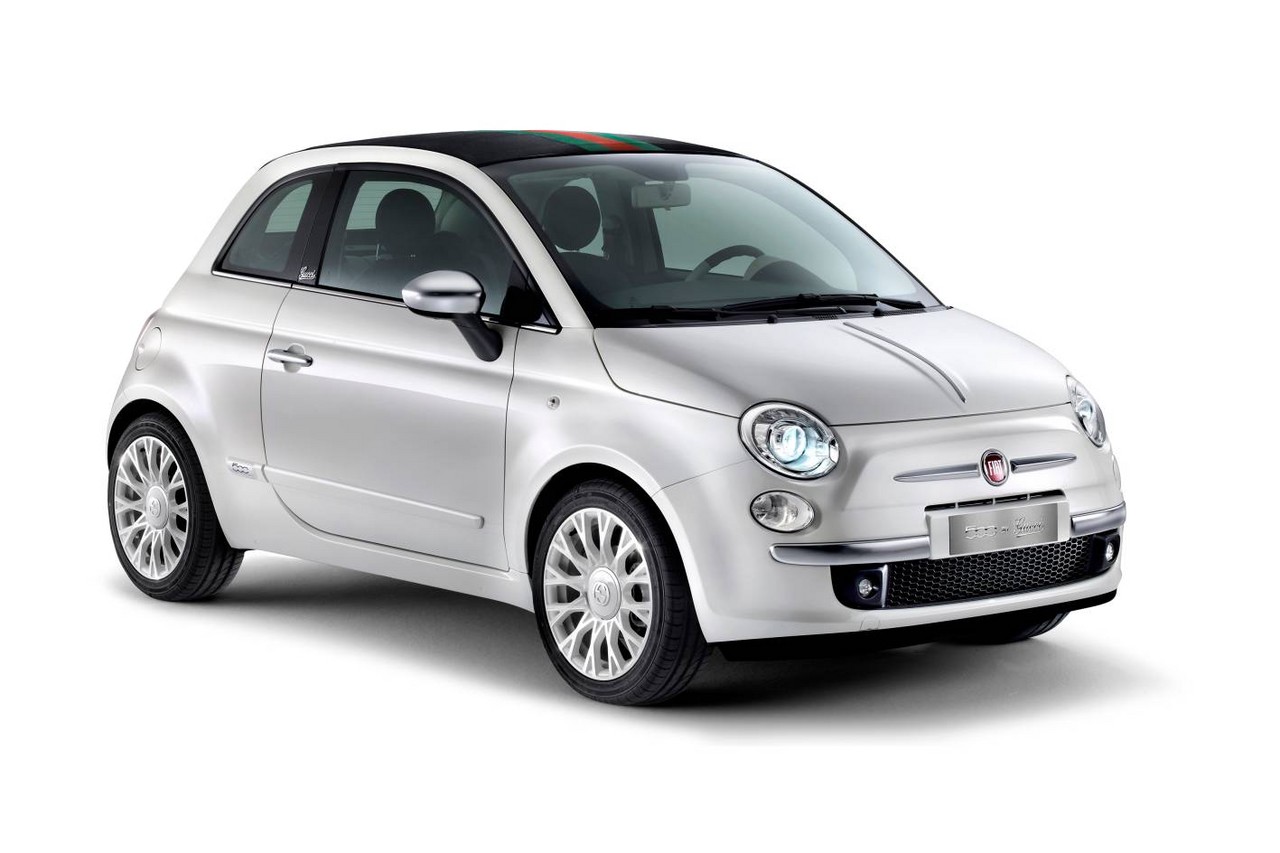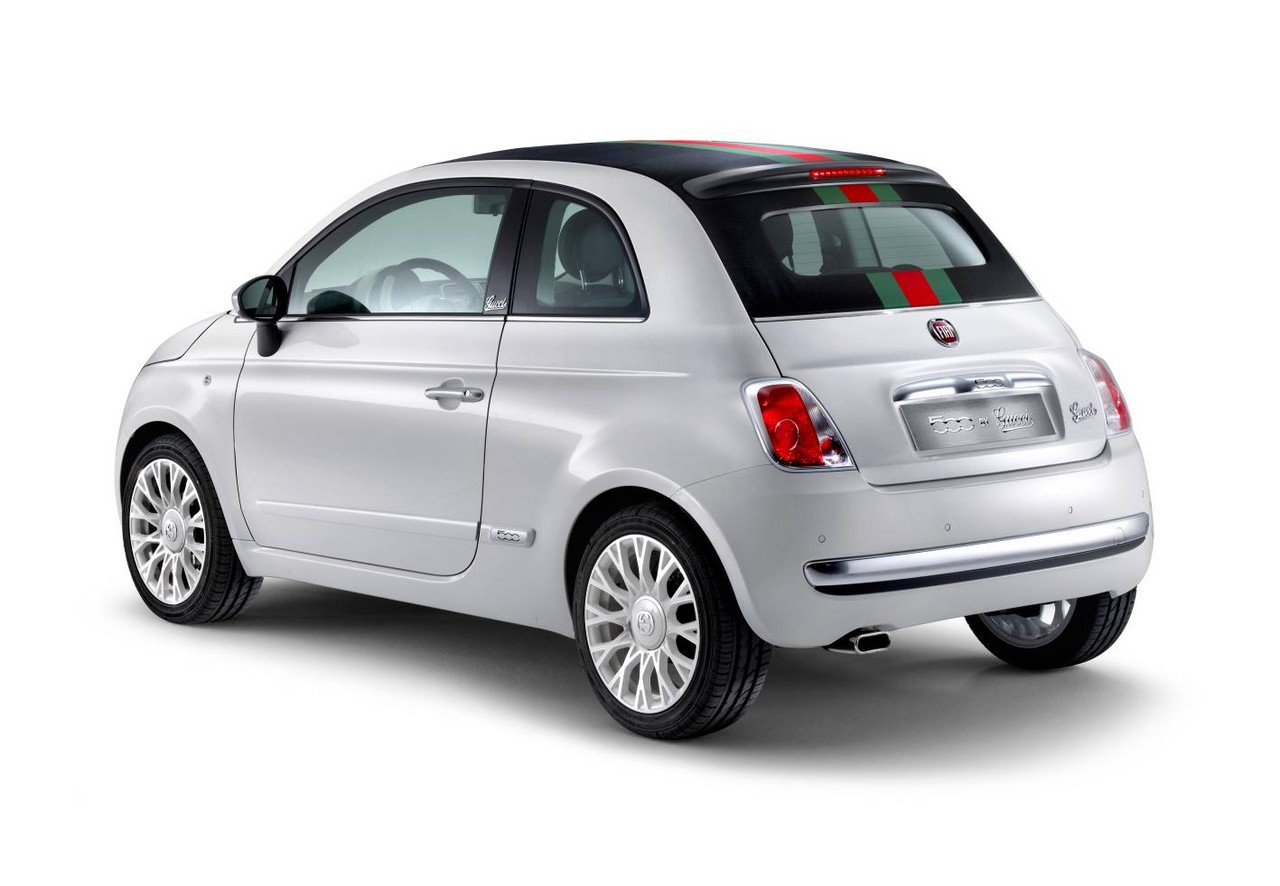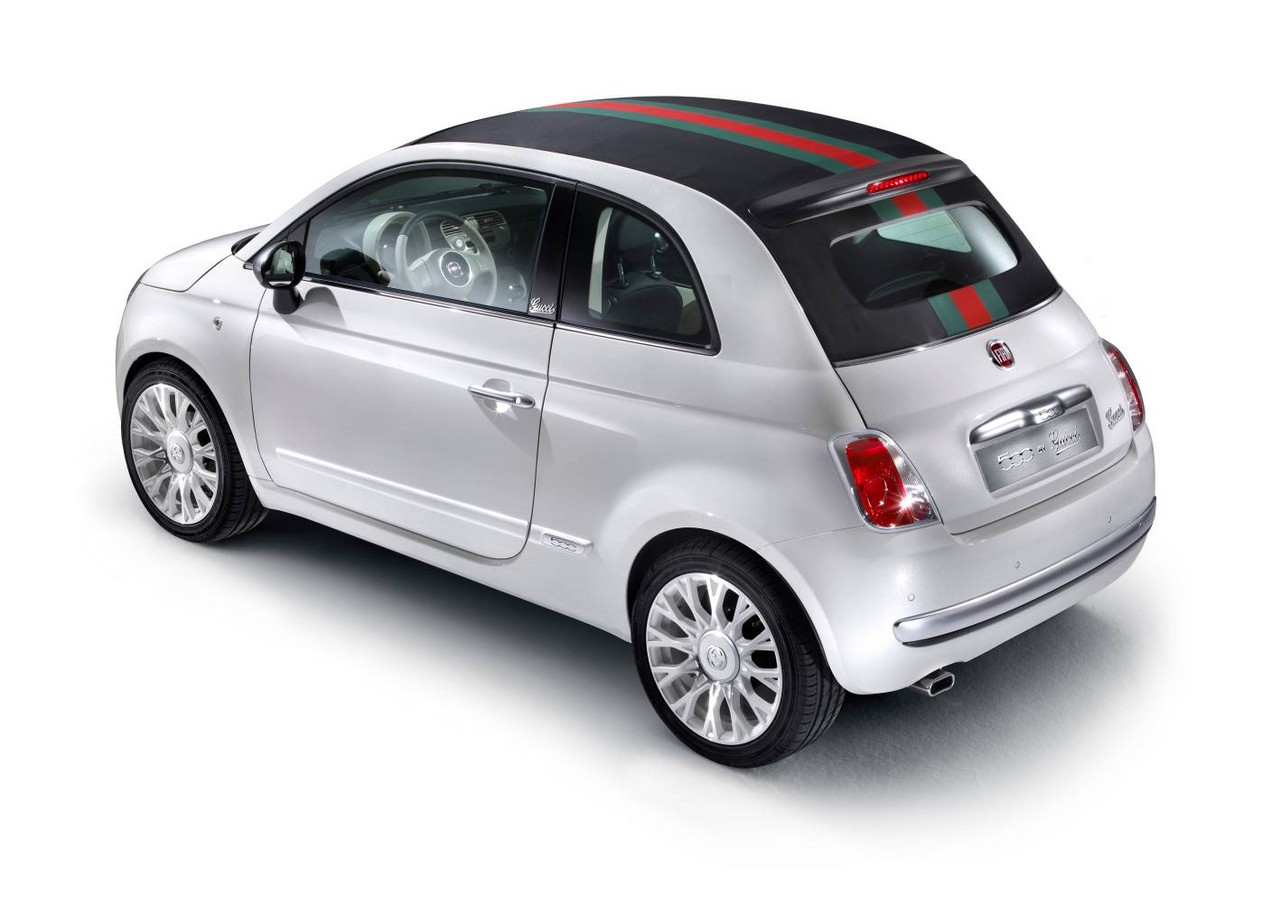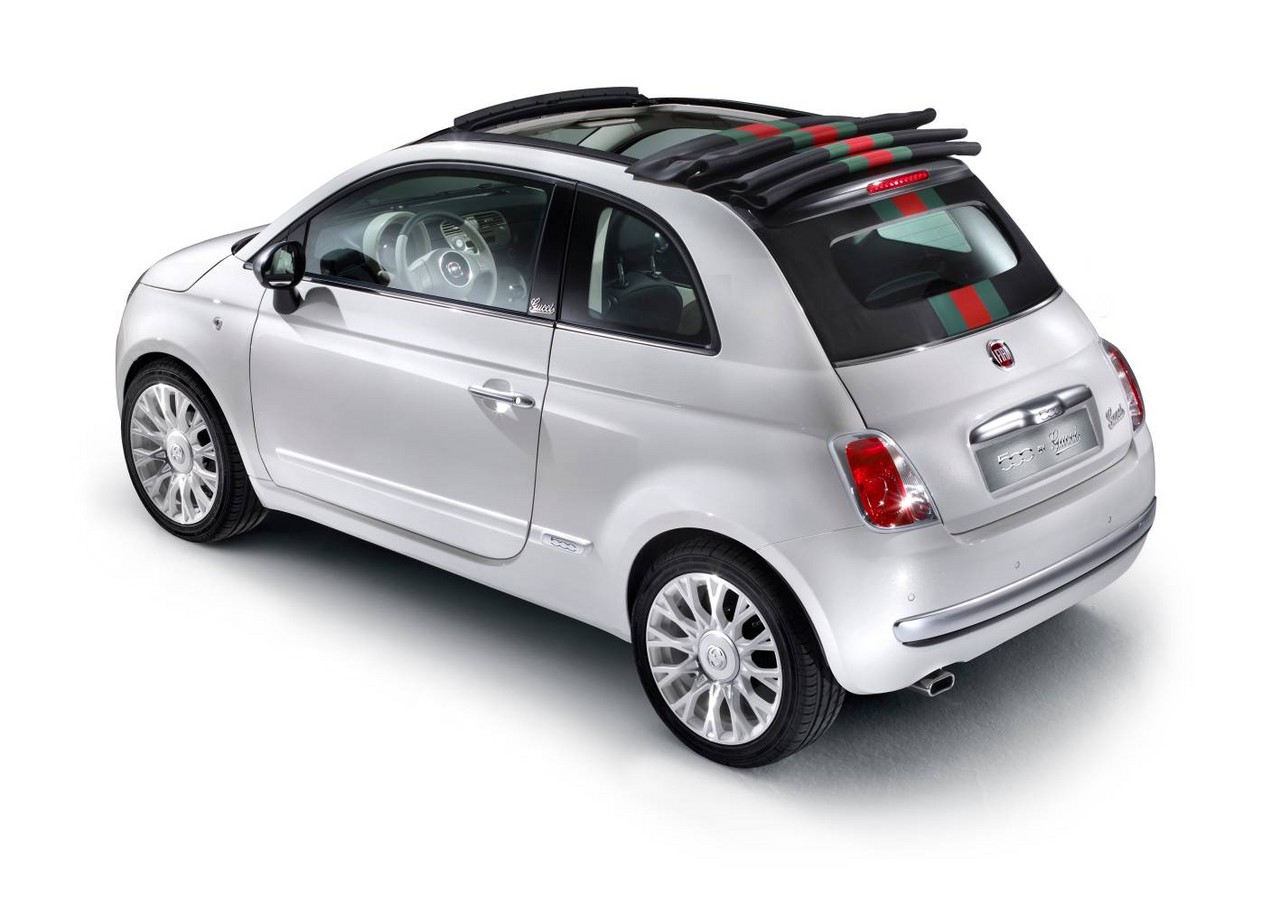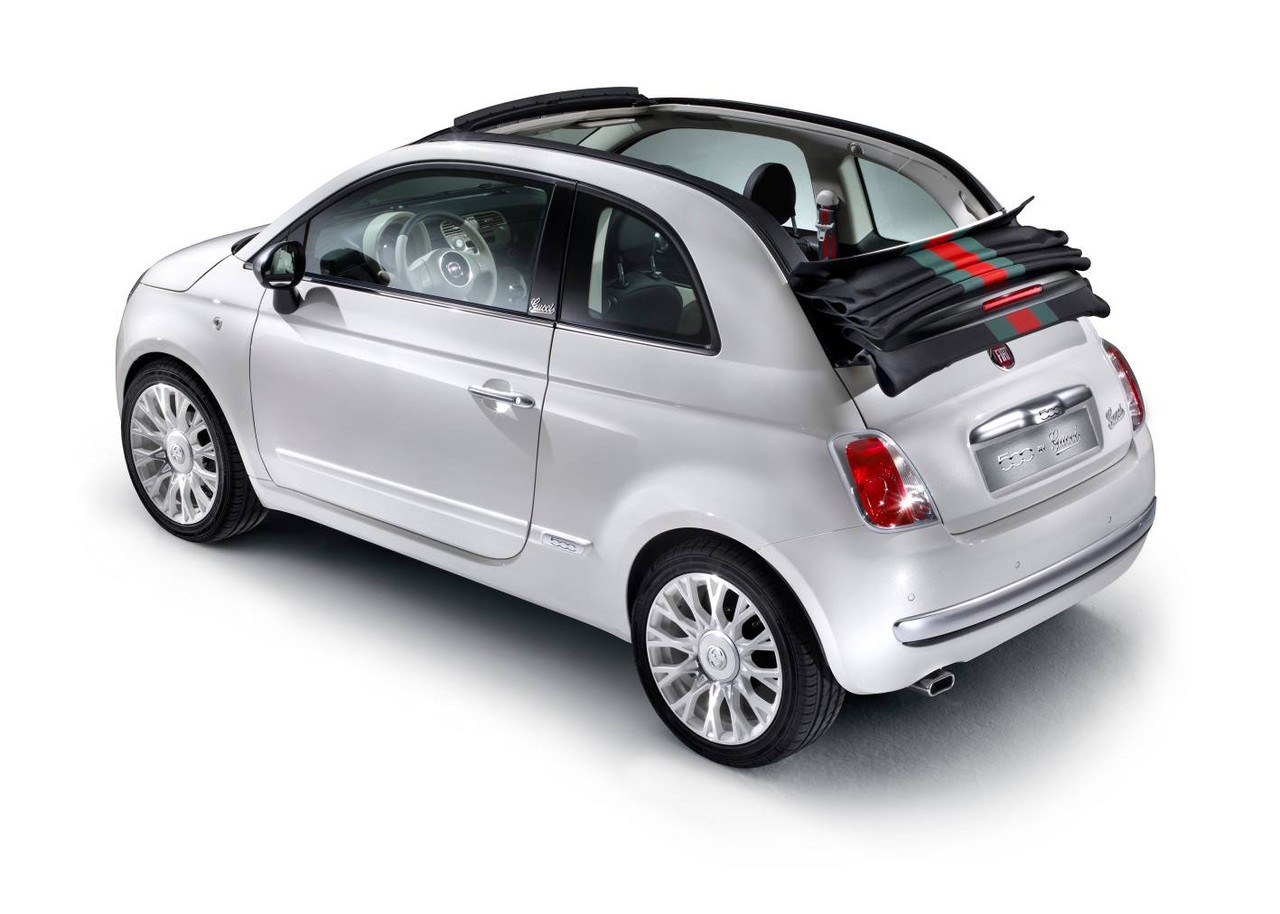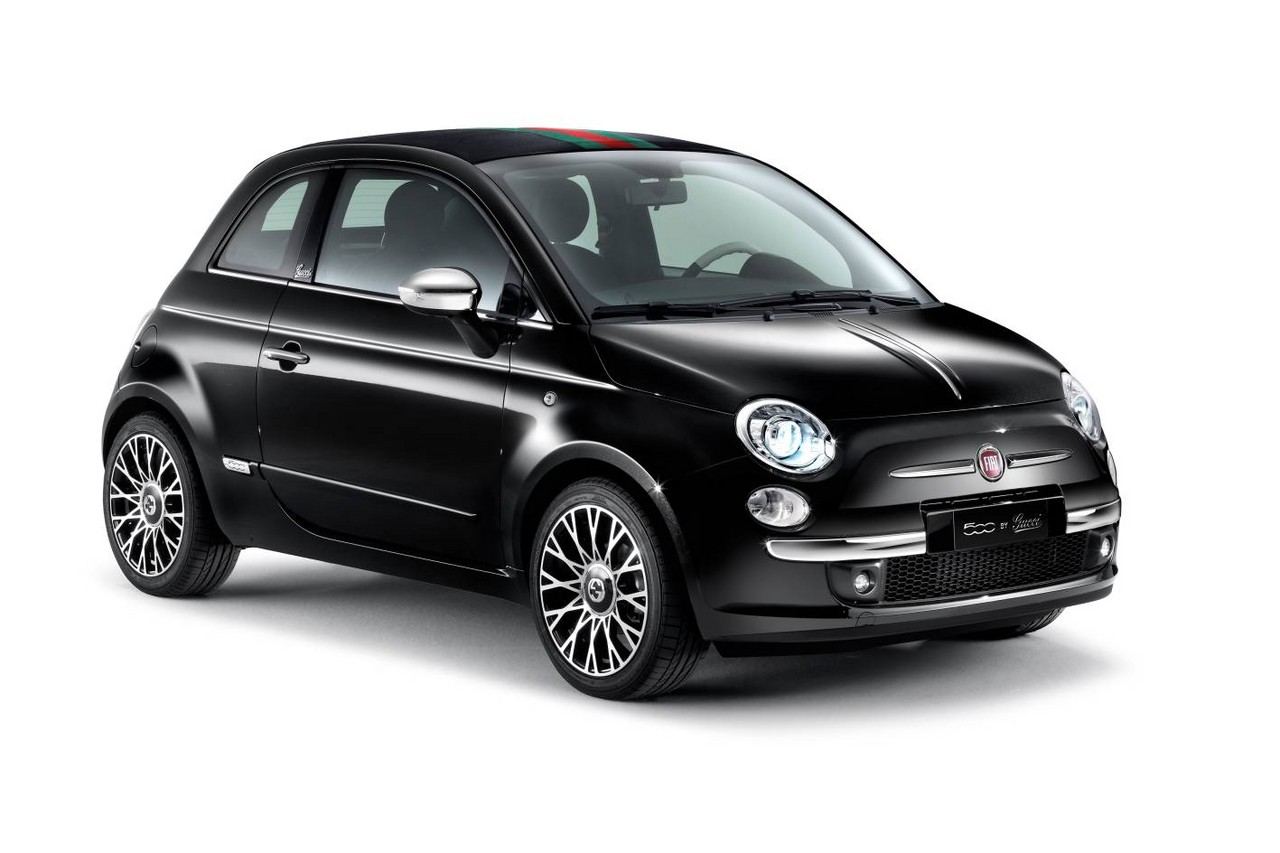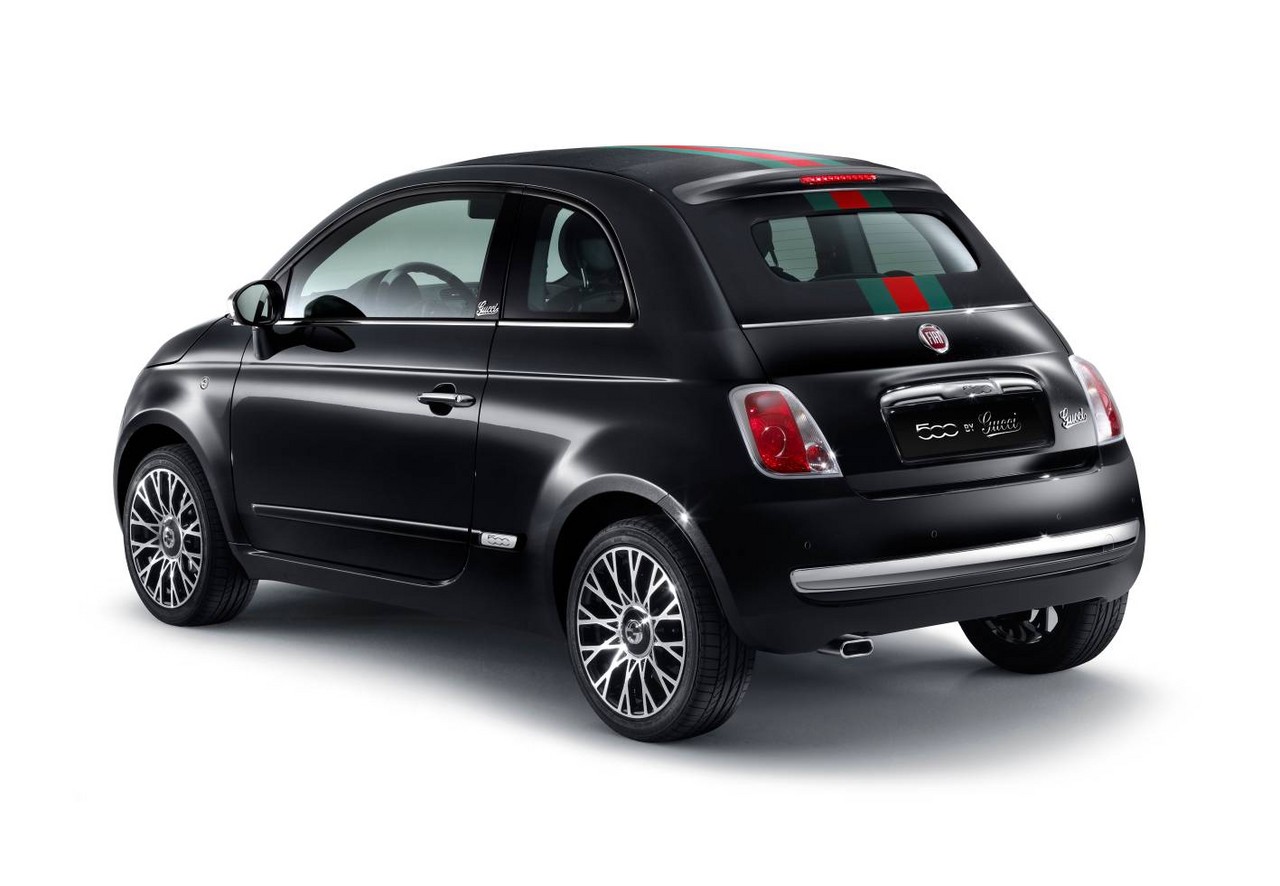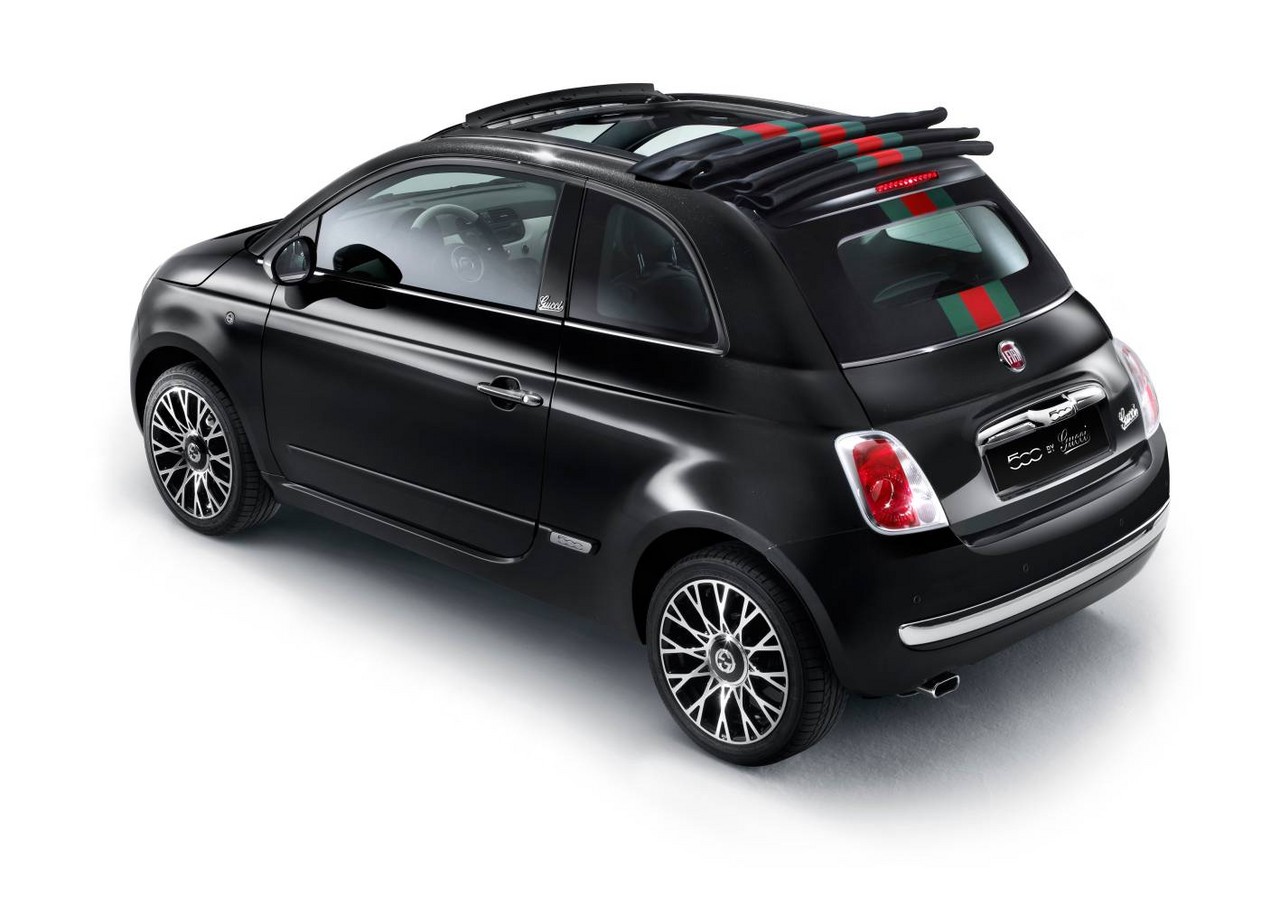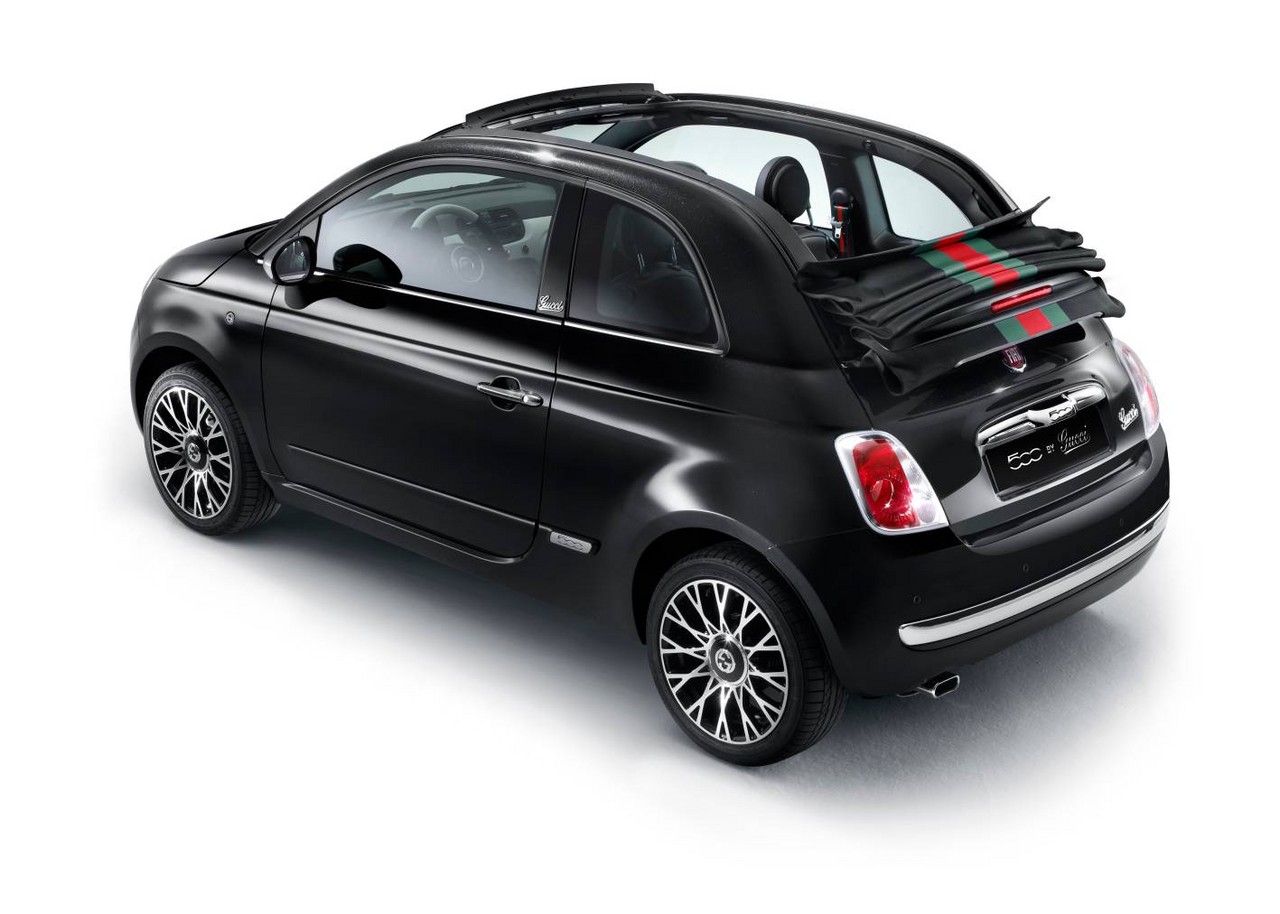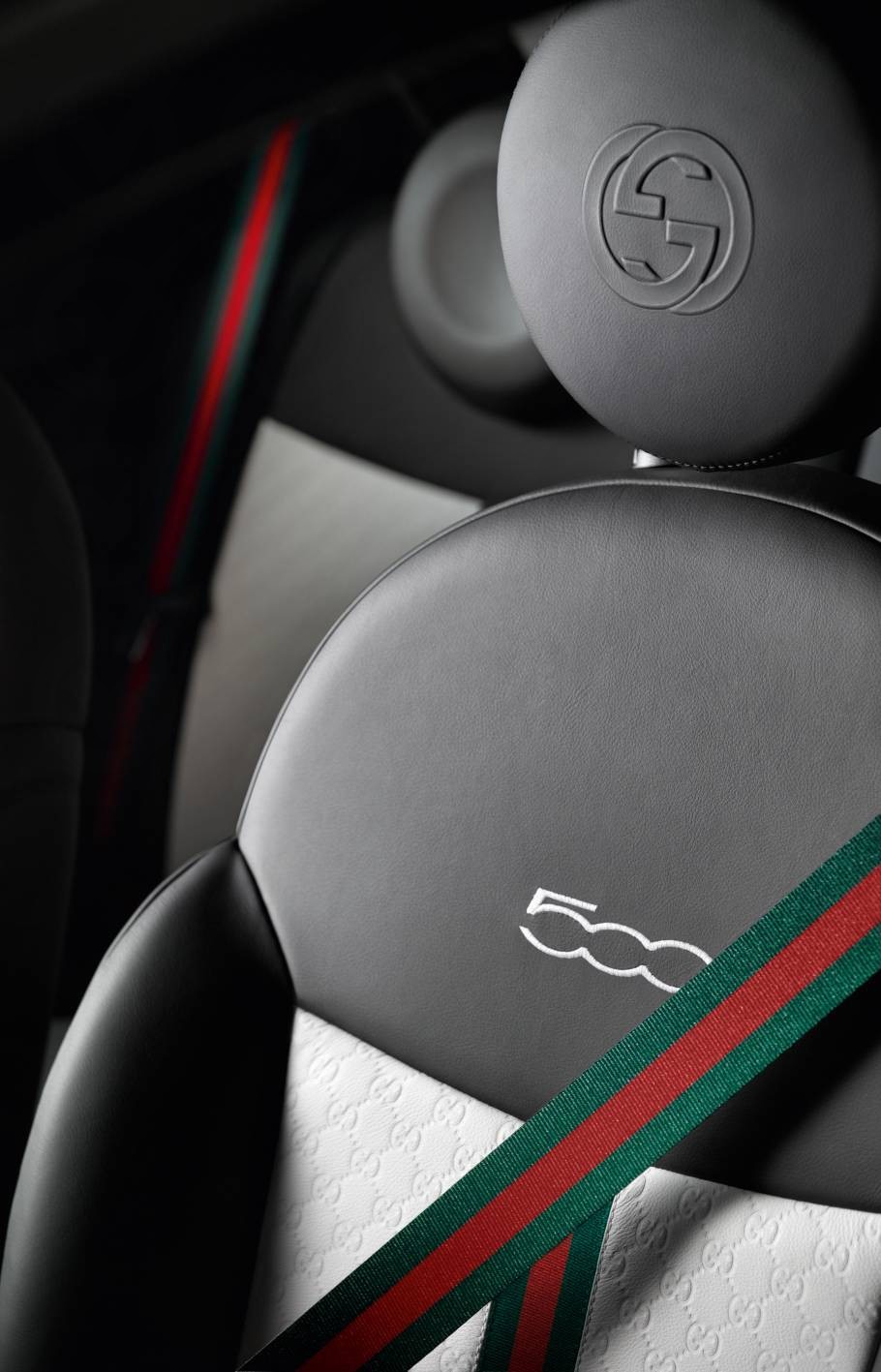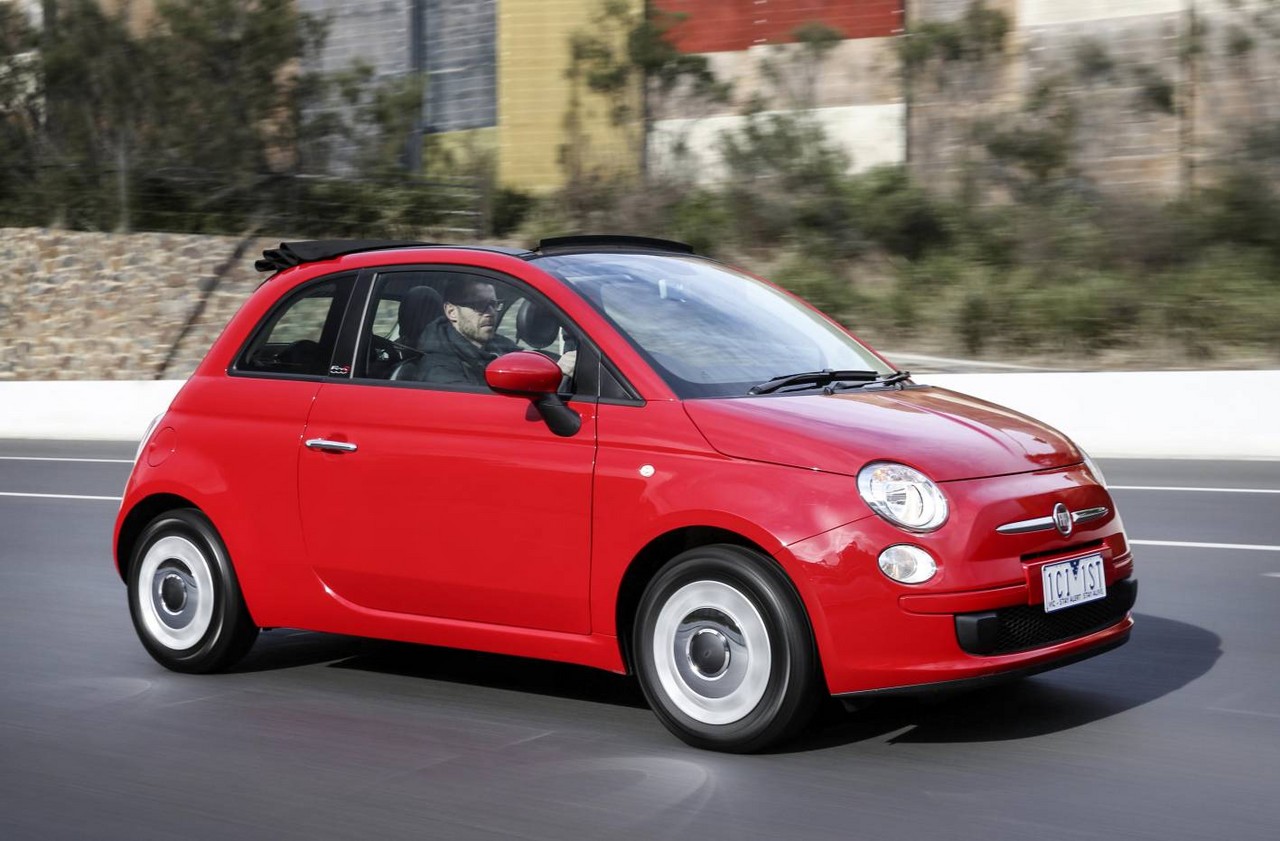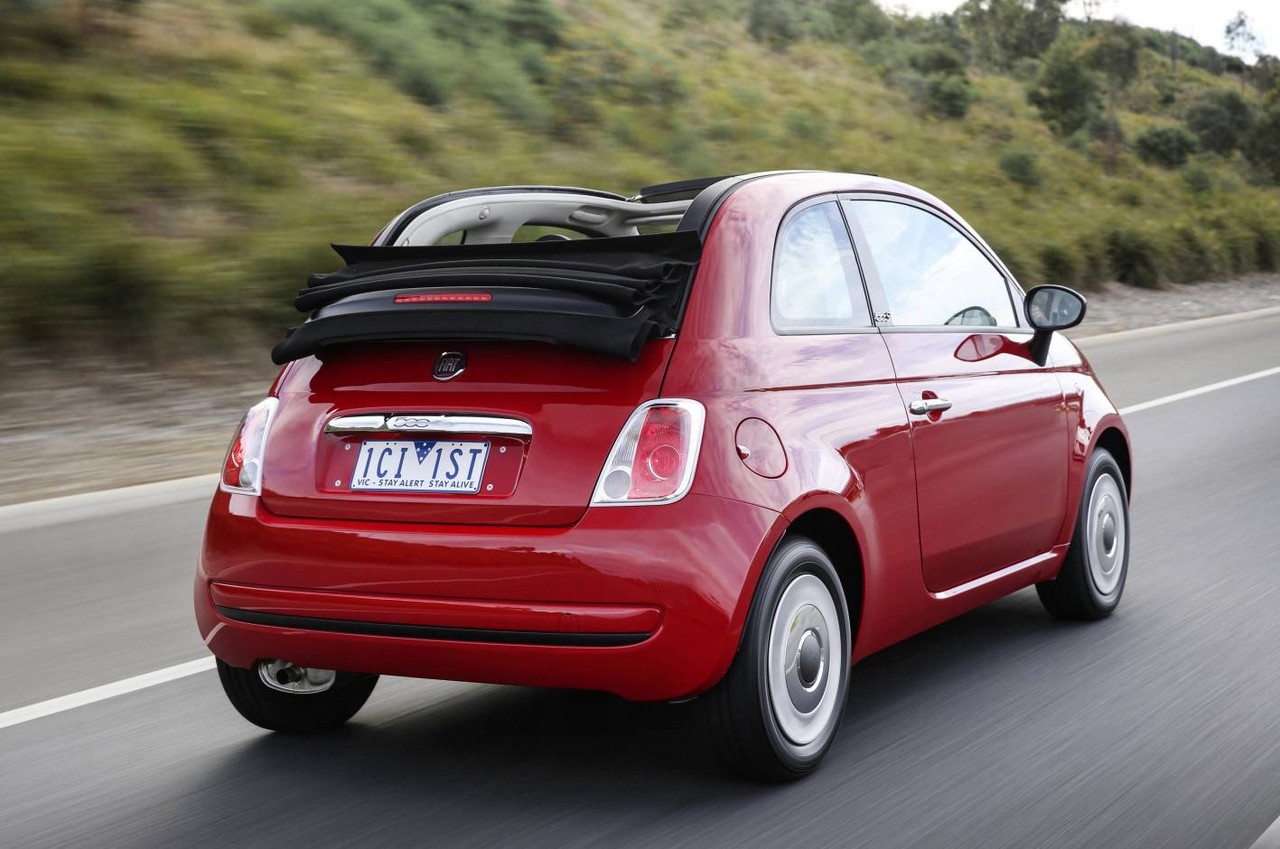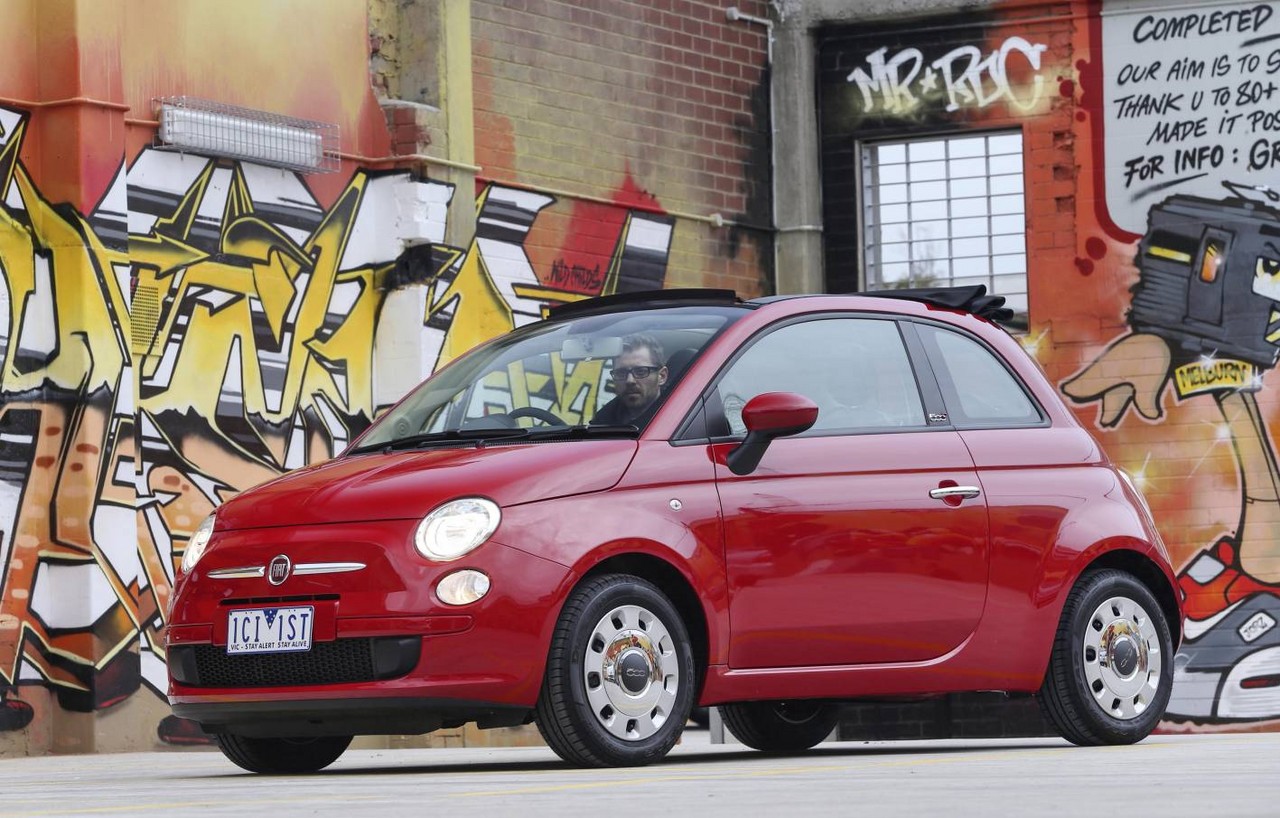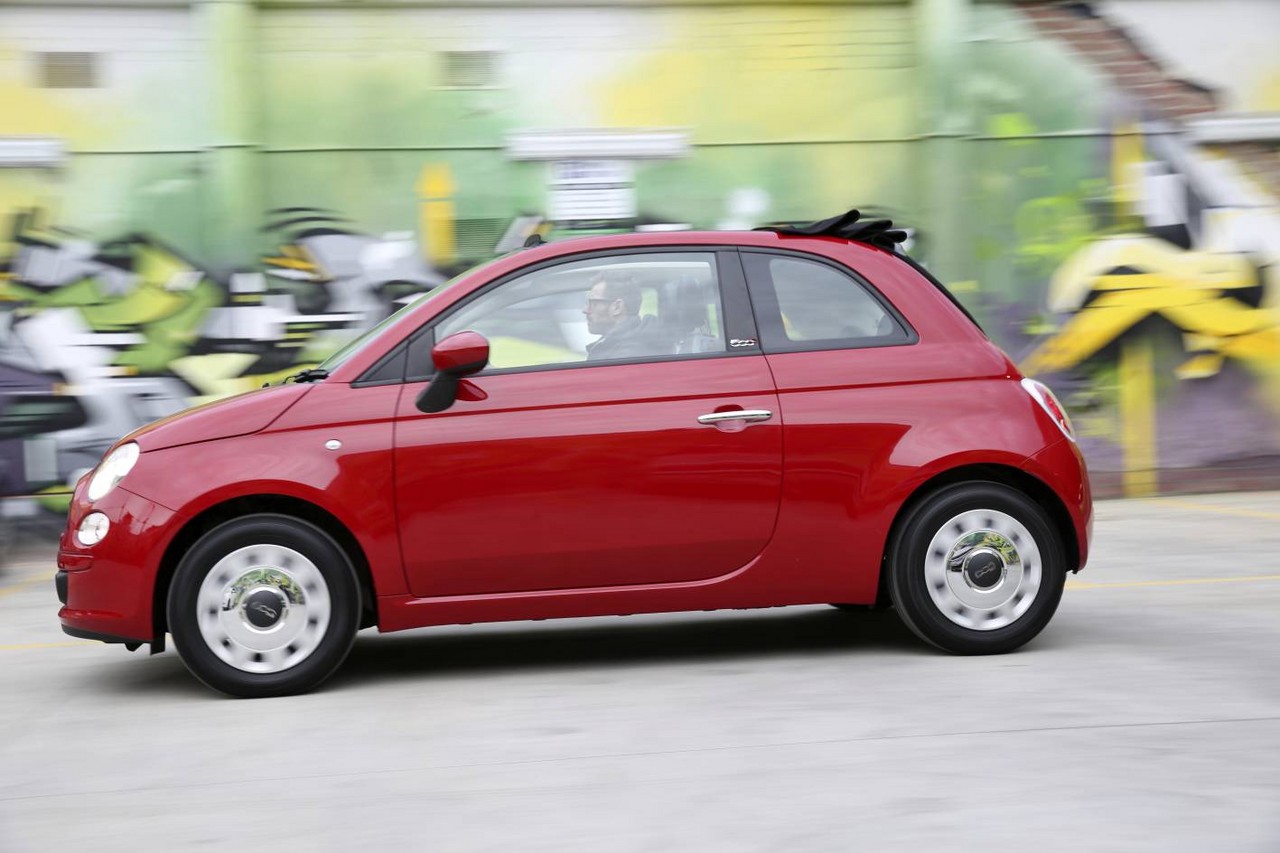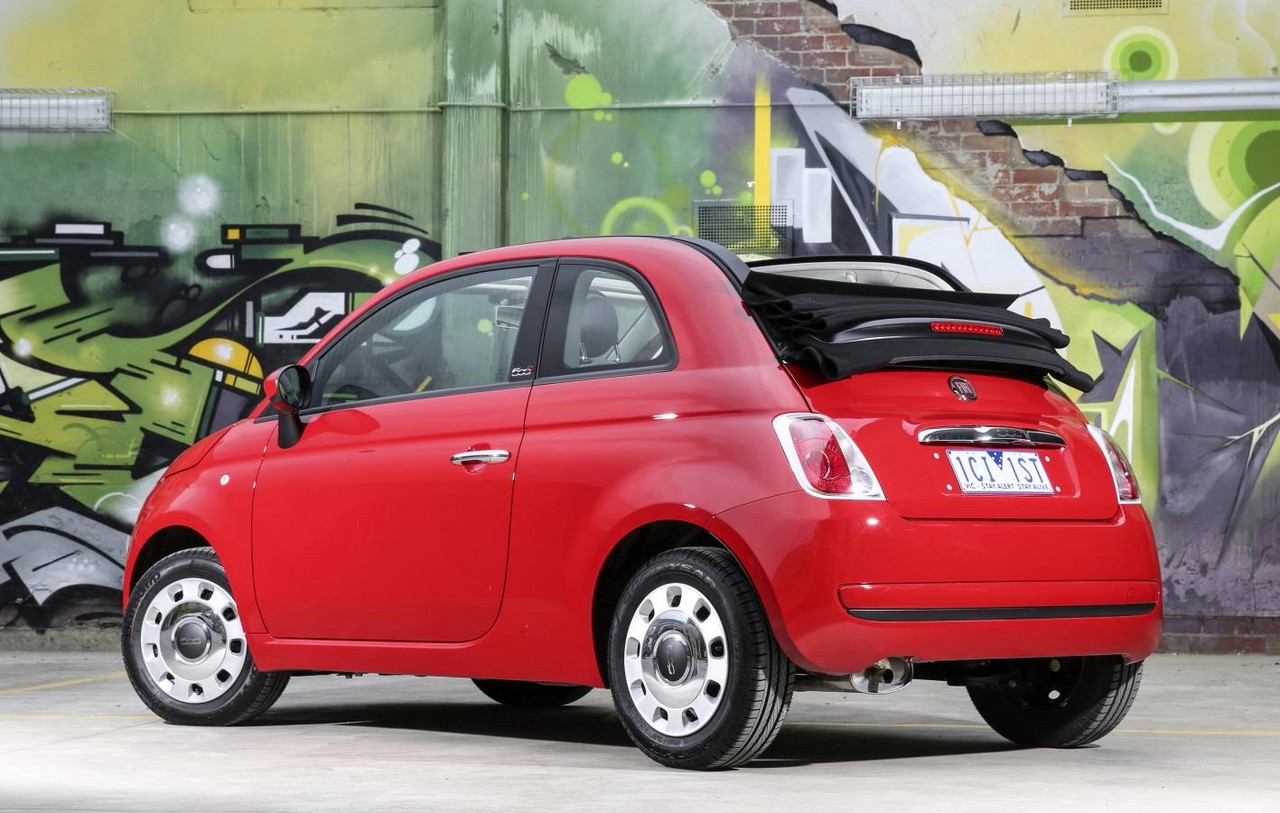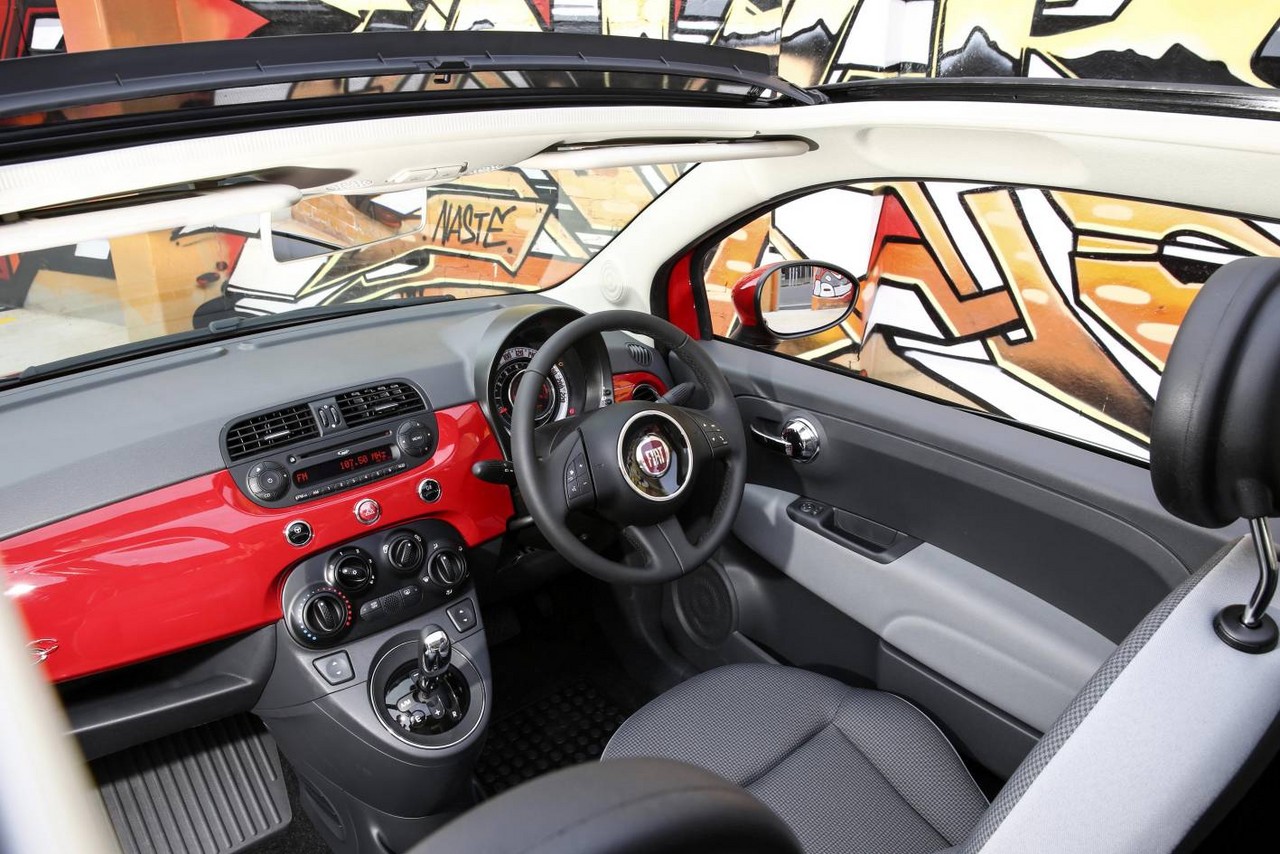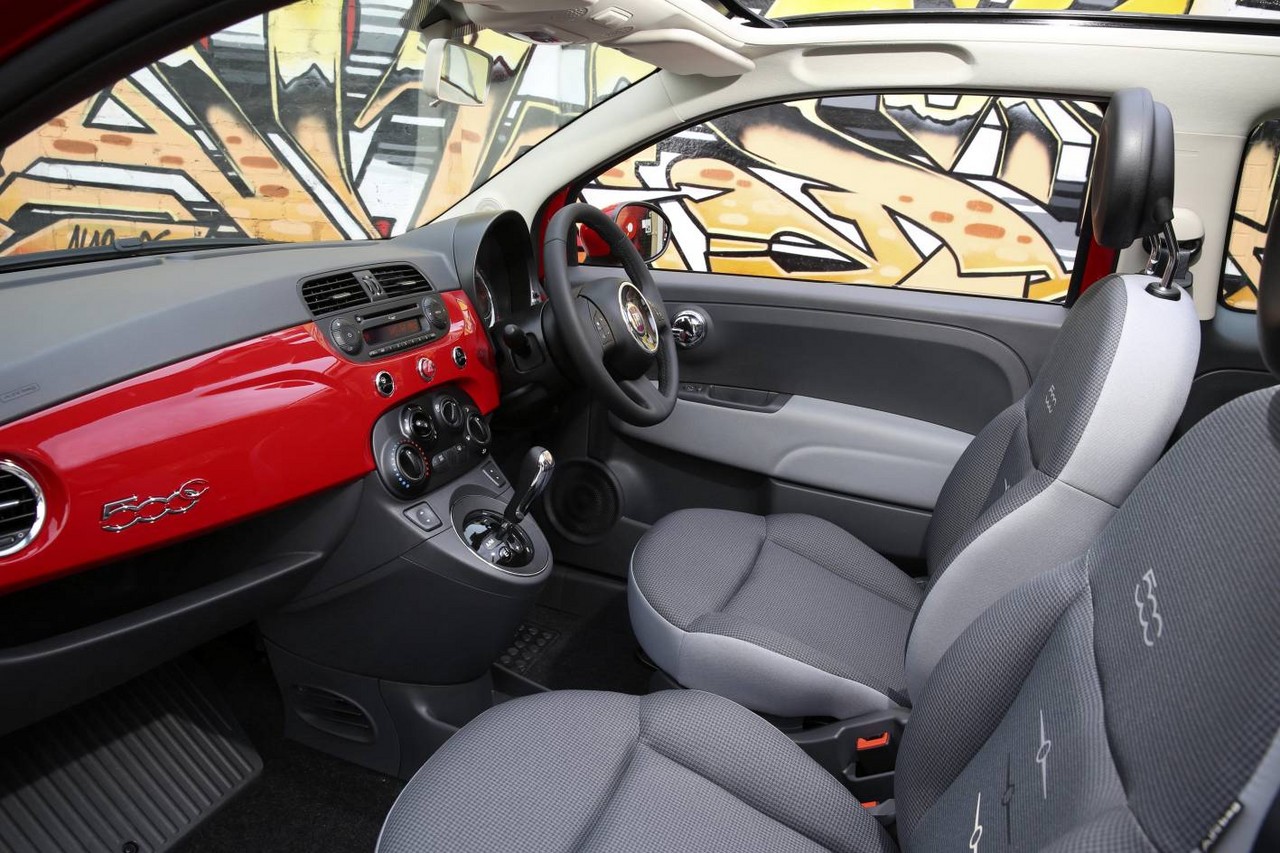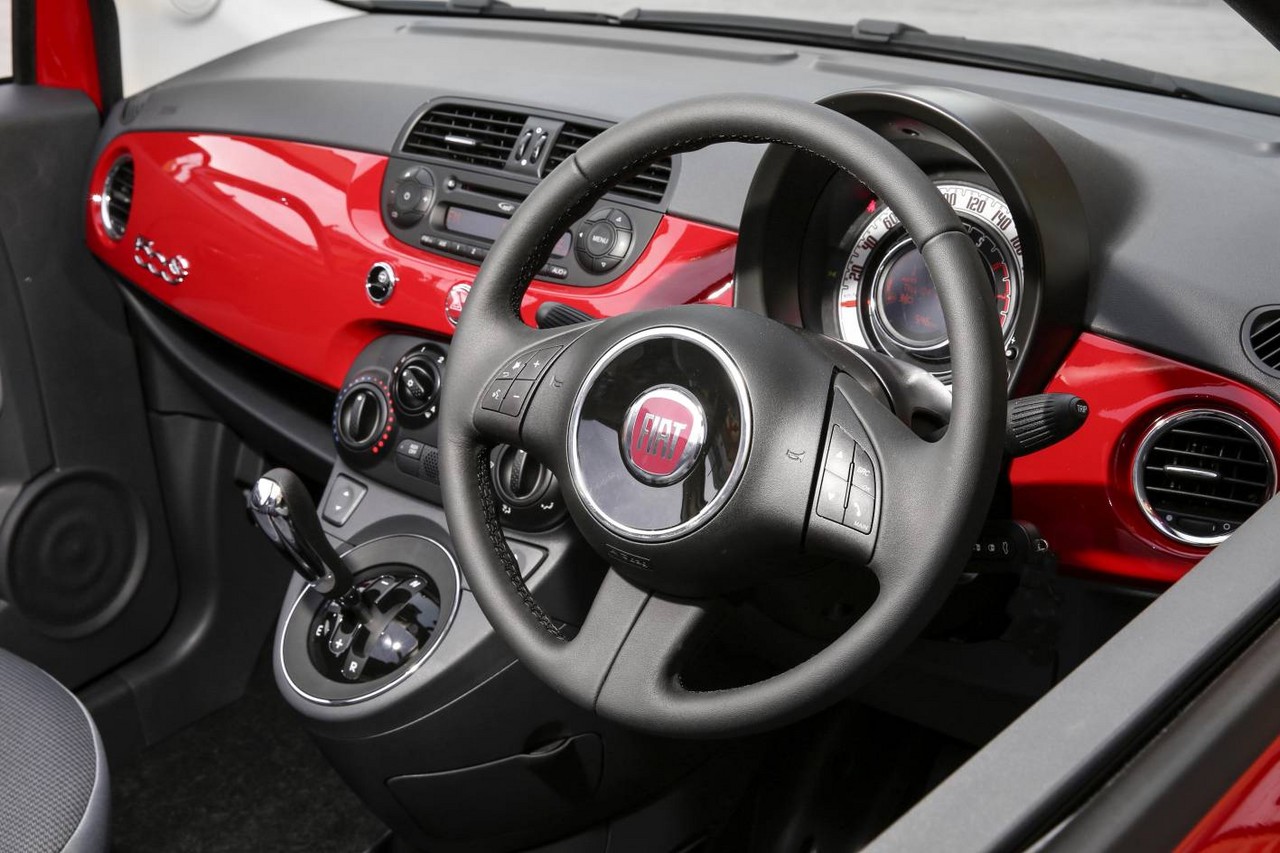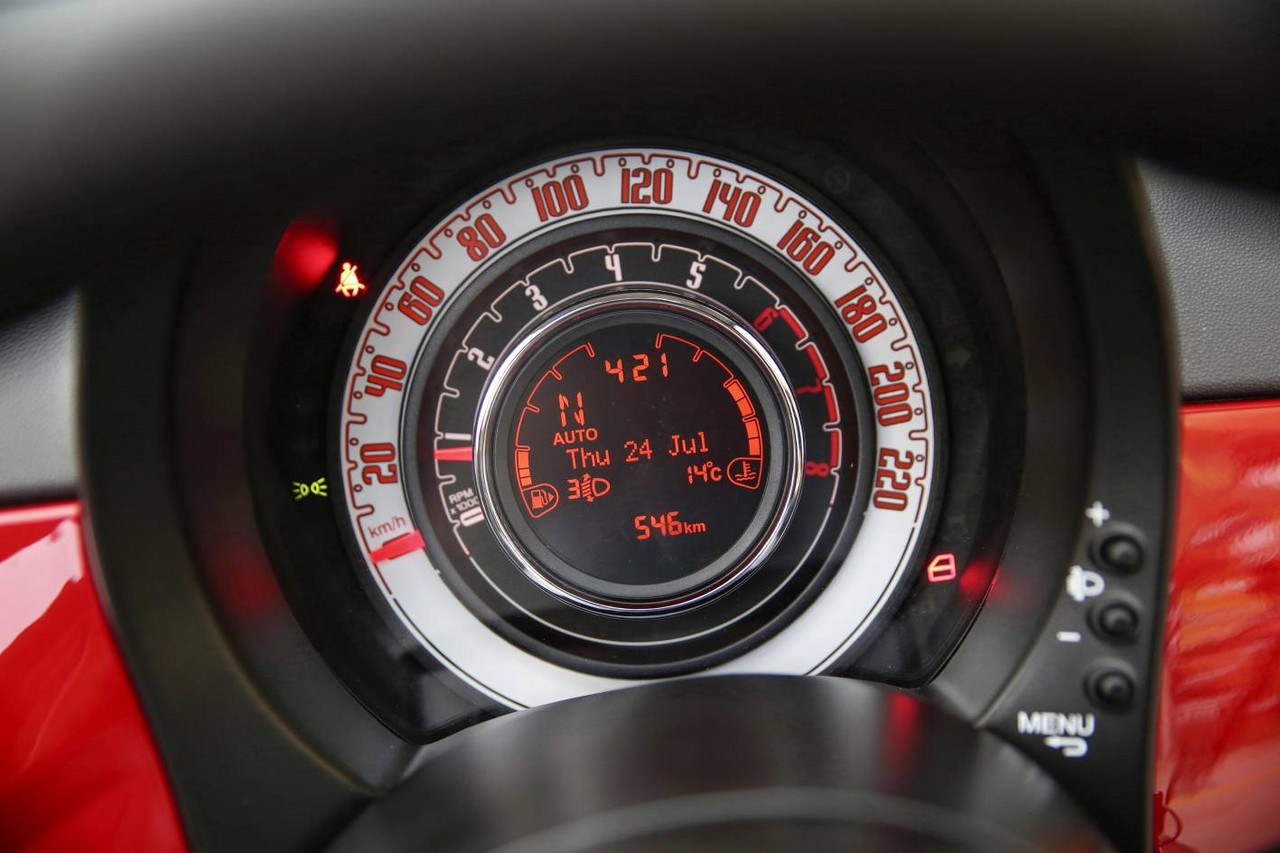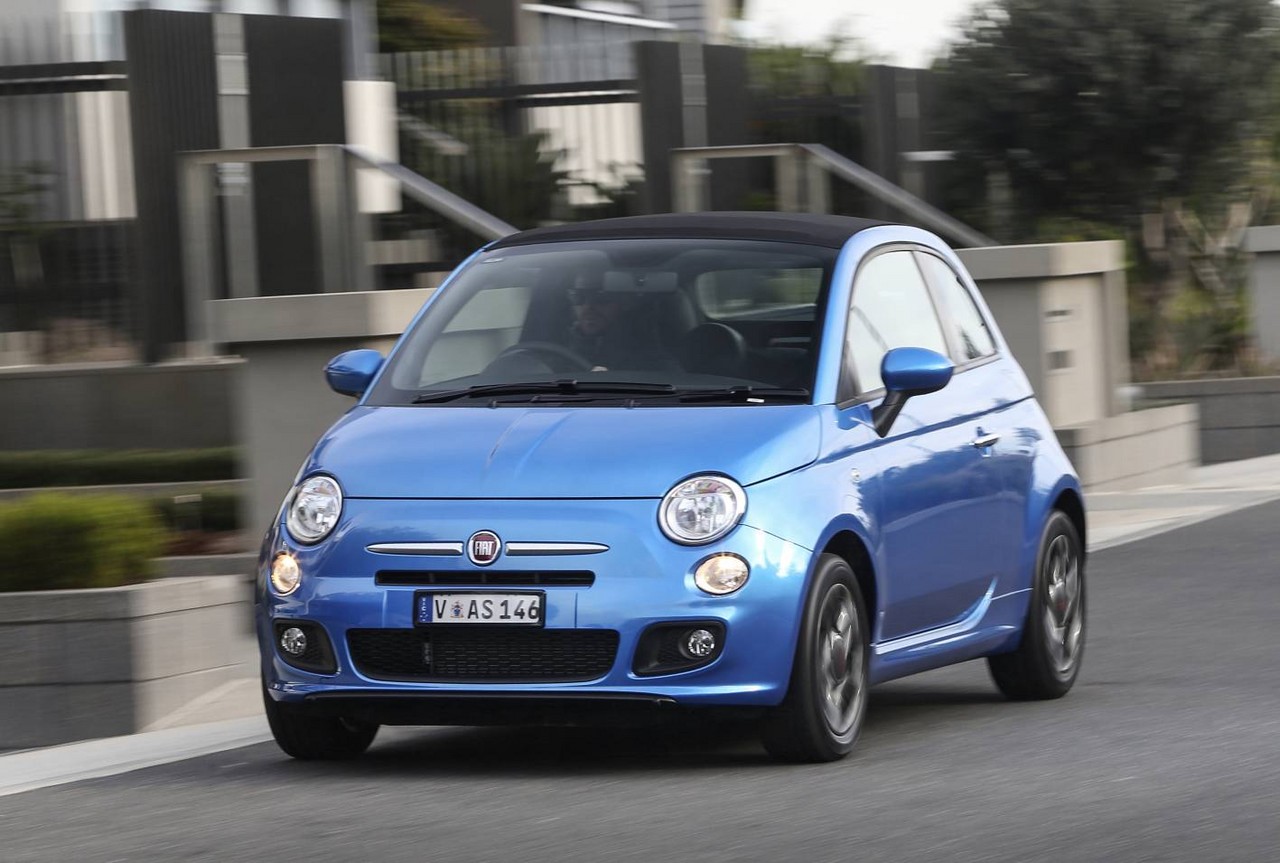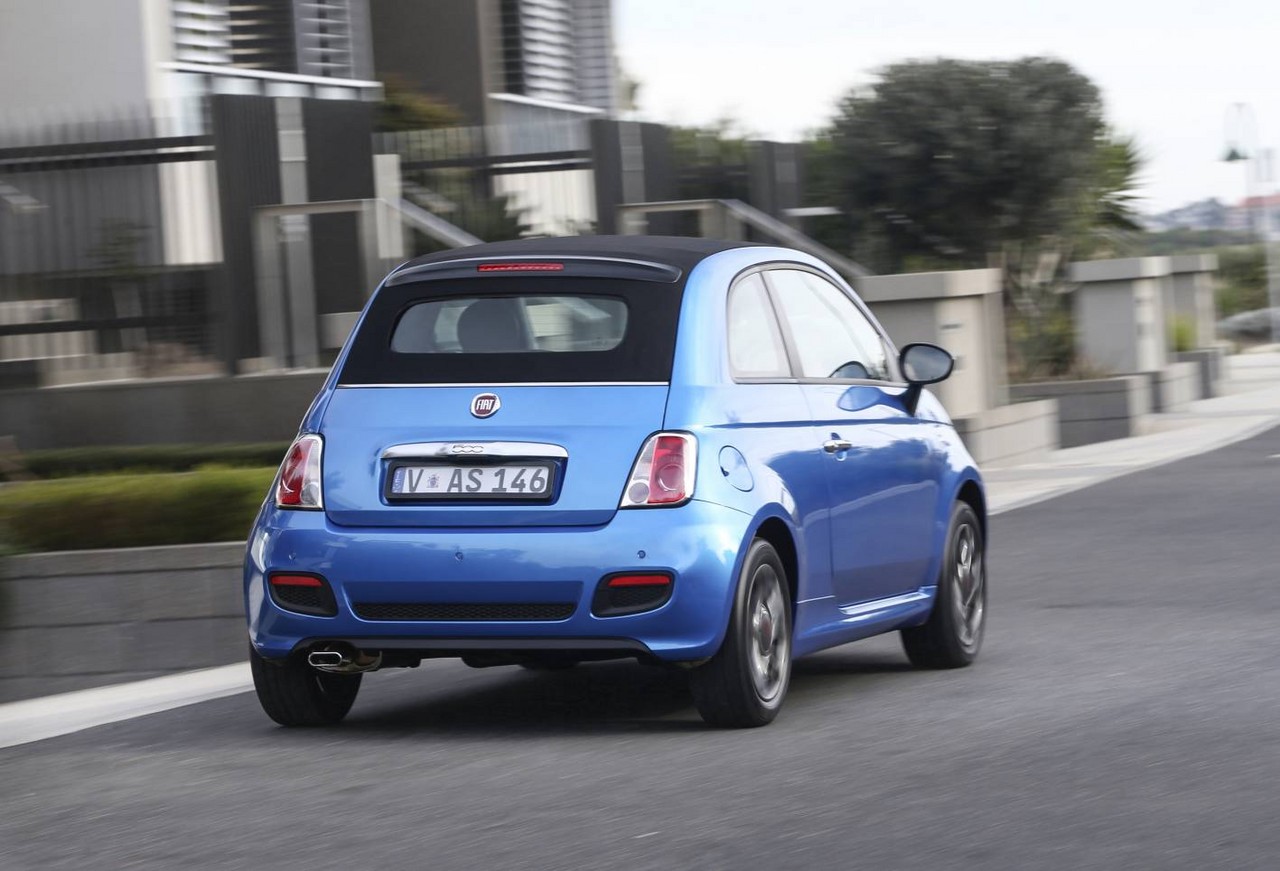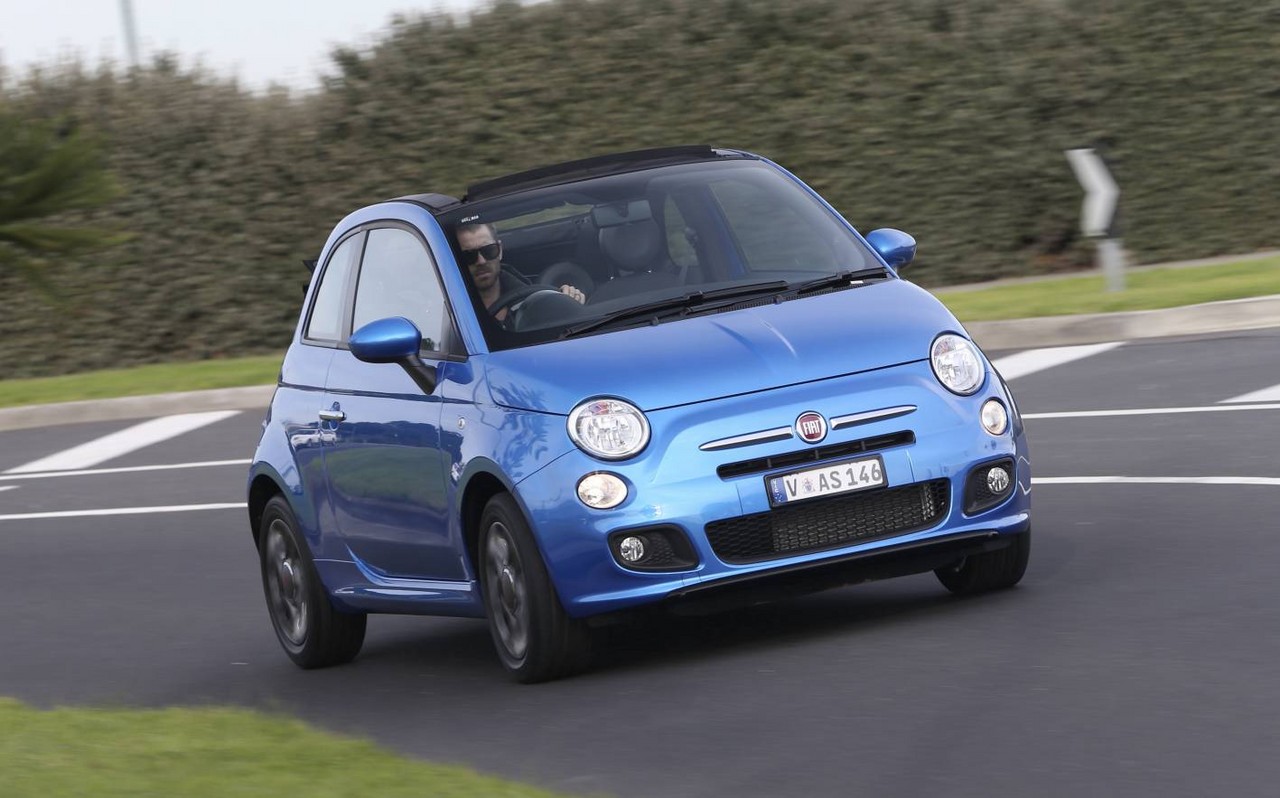
- Economical petrol engines
- Comfortable ride
- Cute styling
- Open-top appeal
- Awkward, upright driving position
- Flat seats
- Semi-automatic transmission provides jerky gearshifts
Review: Fiat Series 1 500C (2010-13)
Overview
Released in January 2010, the Fiat Series 1 (S1) 500C was a two-door, four-seat convertible with a retractable soft-top roof. Based on the Fiat 500 , the 500C was available powered by a 1.4-litre four-cylinder petrol engine mated to either a six-speed manual or Fiat’s ‘DuaLogic’ semi-automatic transmission (or clutchless sequential manual).
In January 2012, however, the 500C range was revised as the 1.4-litre petrol engine was replaced by a 875cc two-cylinder turbocharged petrol engine (Fiat’s ‘TwinAir’ unit). This engine had a cast iron block, an alloy cylinder head, a single turbocharger, single overhead camshaft, four valves per cylinder, variable intake valve lift, a counterbalance shaft and a compression ratio of 10.0:1. Unlike conventional engines which used a throttle valve to regulate airflow into cylinders, the TwinAir engine had electro-hydraulically actuated inlet valves which controlled airflow cylinders directly for greater efficiency. The TwinAir engine also had a Start&Stop function which enabled the engine to shut down when the vehicle was stationary.
The Fiat 500C was 3546 mm long, 1627 mm wide, 1488 mm tall and had a 2300 mm long wheelbase. Furthermore, the 500C had MacPherson strut front suspension and a torsion beam rear axle.
| Engine | Years | Trans. | Peak power | Peak torque | |
|---|---|---|---|---|---|
| 500C | 1.4-litre petrol I4 | 2010-11 | 6sp man., 6sp semi-auto |
74 kW at 6000 rpm | 131 Nm at 4250 rpm |
| 875cc turbo petrol I2 | 2012-13 | 5sp man., 5sp semi-auto |
62.5 kW at 5500 rpm | 145 Nm at 1900 rpm |
Safety equipment
Standard safety equipment included dual front airbags, a driver’s knee airbag, front side airbags, full-length curtain airbags, ABS, electronic brake force distribution, brake assist, electronic stability control, traction control, anti-submarining front seats and front seatbelts with pretensioners and load limiters.
Features
Standard features included 16-inch alloy wheels, a six speaker sound system with CD player, MP3-compatibility and auxiliary inputs (MP3/USB/iPod), climate control air conditioning, Bluetooth connectivity, front fog lights, rear parking sensors, 50/50 split and folding rear seats, a leather-wrapped multi-function steering wheel and gearshift, remote central locking, power windows, a height adjustable driver’s seat, height adjustable steering wheel, trip computer and an immobiliser.
With the introduction of the TwinAir-powered models, the 500C underwent a range of minor cosmetic changes, including the fitment of 16-inch matt black wheels, a metallic-effect dashboard, piano-black roof and spoiler and satin-chrome finish for the door mirrors, door handles and bootlid trim.
In May 2012, Chrysler Australia assumed responsibility for the distribution of Alfa Romeo and Fiat vehicles in Australia from Ateco Automotive. While the post-May 2012 variants were known as Lounge variants, standard features were unchanged.
Related links
- Press Kit: Fiat 500C (January 2010)
- Brochure: Fiat 500 and 500C (February 2010)
- Press Kit: Fiat 500 and 500C TwinAir (February 2012)
Review: Fiat Series 2 500C (2013-14)
Overview
Released in June 2013, the Fiat Series 2 (S2) 500C introduced a revised range and lower pricing. While the Pop and Sport variants were powered by Fiat’s 1.2- and 1.4-litre naturally aspirated ‘FIRE’ petrol engines, the range-topping Lounge was powered by the 875 cc turbocharged TwinAir engine. To coincide with the release of the Series 2 500C, a limited-run Gucci edition – pictured above – was also released.
The Series 2 500C introduced a ‘Dualdrive’ electric power steering system which included a ‘City’ mode – activated via a button on the fascia – which provided greater power assistance for low-speed manoeuvres. Inside, the Series 2 500C also featured Blue&Me, a Windows Mobile-based system developed between Fiat and Microsoft which included USB music playback and Bluetooth connectivity with voice recognition.
| Engine | Variant | Trans. | Peak power | Peak torque |
|---|---|---|---|---|
| 1.2-litre petrol I4 | Pop | 5sp semi-auto | 51 kW at 5500 rpm | 102 Nm at 3000 rpm |
| 1.4-litre petrol I4 | Sport | 5sp semi-auto | 74 kW at 6000 rpm | 131 Nm at 4250 rpm |
| 875 cc turbo petrol I2 | Lounge | 5sp semi-auto | 63 kW at 5500 rpm | 145 Nm at 1900 rpm |
Safety equipment
Compared to its Series 1 predecessor, standard safety equipment for the Series 2 500C was unchanged.
Features
Standard features for the 500C Pop included 14-inch steel wheels with 175/65 R14 tyres, a six speaker sound system with a CD player, MP3-compatibility, auxiliary inputs (3.5 mm/USB) and Blue&Me system with Bluetooth connectivity, air conditioning, Pop seat fabrics, daytime running lights, leather-wrapped steering wheel, remote central locking, power windows and mirrors, a height adjustable steering wheel, a height adjustable driver’s seat, trip computer and an immobiliser.
The 500C Sport was further equipped with 15-inch alloy wheels with 185/55 R15 tyres, sport seats with red stitching, front fog lights and a flat-bottomed steering wheel. Visually, the Sport variants could be identified by their body-coloured door mirrors, sports body kit (including rear spoiler), matt silver dash panel, dark tinted glass and dark chrome trim accents.
Beyond this, the range-topping 500C Lounge added climate control air conditioning, Lounge seat fabrics, a leather-wrapped steering wheel, fixed glass roof with sunblind and an electrochromatic rear view mirror. Visually, the Lounge variants could be identified by their body-coloured door mirrors and chrome bumper accents (front and rear).
Fiat 500 by Gucci
To coincide with the release of the Series 2 500C, a limited-run Gucci edition was released. Compared to the Lounge variants, the ‘500 by Gucci’ was distinguished by its 16-inch ‘Gucci’ alloy wheels with 195/45 R16 tyres, Interscope sound system with a 30 watt amplifier, six speakers and a 100 watt subwoofer, two-tone Gucci designed seats with Frau leather upholstery, xenon headlights, dual tone leather wrapped steering wheel and rear parking sensors.
Visually, the 500 by Gucci could be identified by its glossy pearl glass paint treatment (in black and white), black soft top roof with green-red-green stripes, chrome door mirrors and ‘Gucci’ badges. Of a worldwide production run of 500, 101 ‘500 by Gucci’ vehicles were allocated to Australia.
Related links
Review: Fiat Series 3 500C (2014-15)
Overview
Released in August 2014, the Fiat Series 3 (S3) 500C introduced Euro 6 compliant 1.2-litre petrol engines and the Sport variant was renamed as the ‘S’. For S and Lounge variants, the Series 3 500C interior featured a seven-inch TFT digital instrument display that was developed in collaboration with Magneti Marelli. Furthermore,
- For S variants, activation of Sport mode resulted in the display of sports-themed gauges and a digital RPM gauge; and,
- For Lounge variants, an ‘eco’ gauge would appear at the press of a button which measured the vehicle’s fuel efficiency in real time.
The Series 3 500C was available with fourteen different paint finishes, with Blue Jelly Bean, Mint Milkshake and Vanilla Ice Cream introduced as part of the Series 3 update.
| Engine | Variant | Trans. | Peak power | Peak torque |
|---|---|---|---|---|
| 1.2-litre petrol I4 | Pop | 5sp semi-auto | 51 kW at 5500 rpm | 102 Nm at 3000 rpm |
| 1.4-litre petrol I4 | S | 5sp semi-auto | 74 kW at 6000 rpm | 131 Nm at 4250 rpm |
| 875 cc turbo petrol I2 | Lounge | 5sp semi-auto | 63 kW at 5500 rpm | 145 Nm at 1900 rpm |
Safety equipment
Compared to its Series 2 predecessor, standard safety equipment for the Series 3 500C was unchanged.
Features
Standard features for the 500C Pop were also unchanged. As noted above, however, the 500 S and 500 Lounge were fitted with seven-inch TFT digital instrument clusters.
Related links
